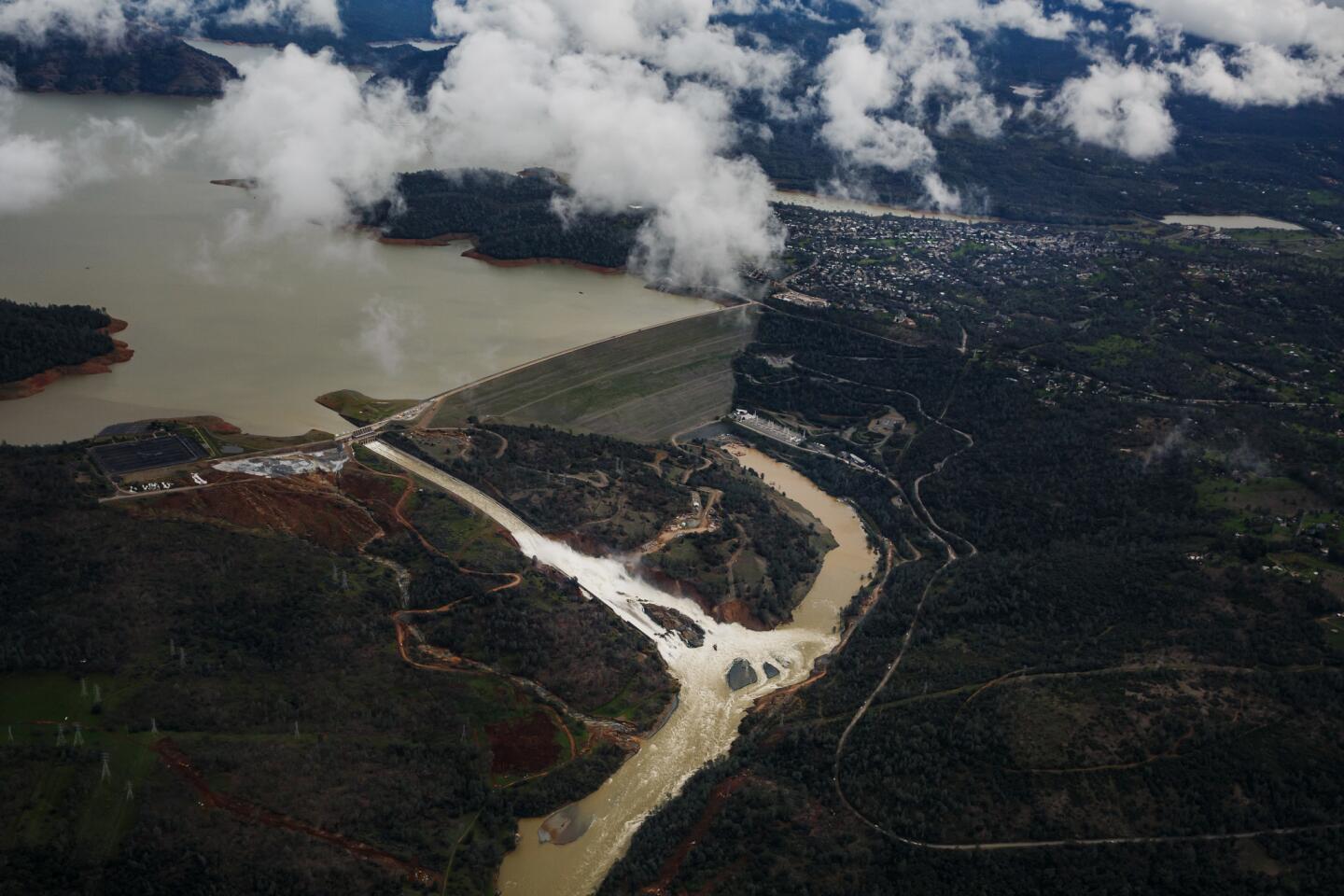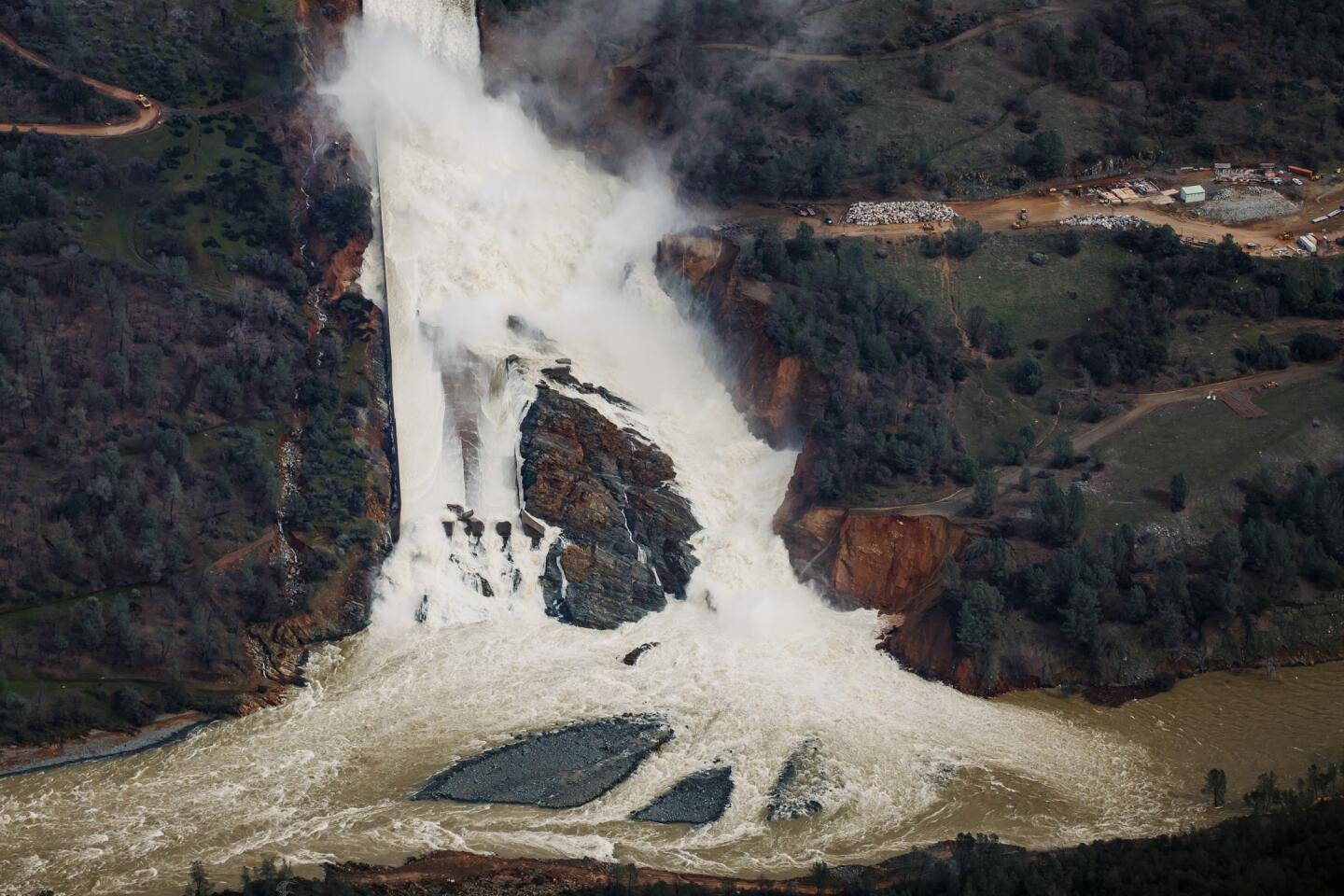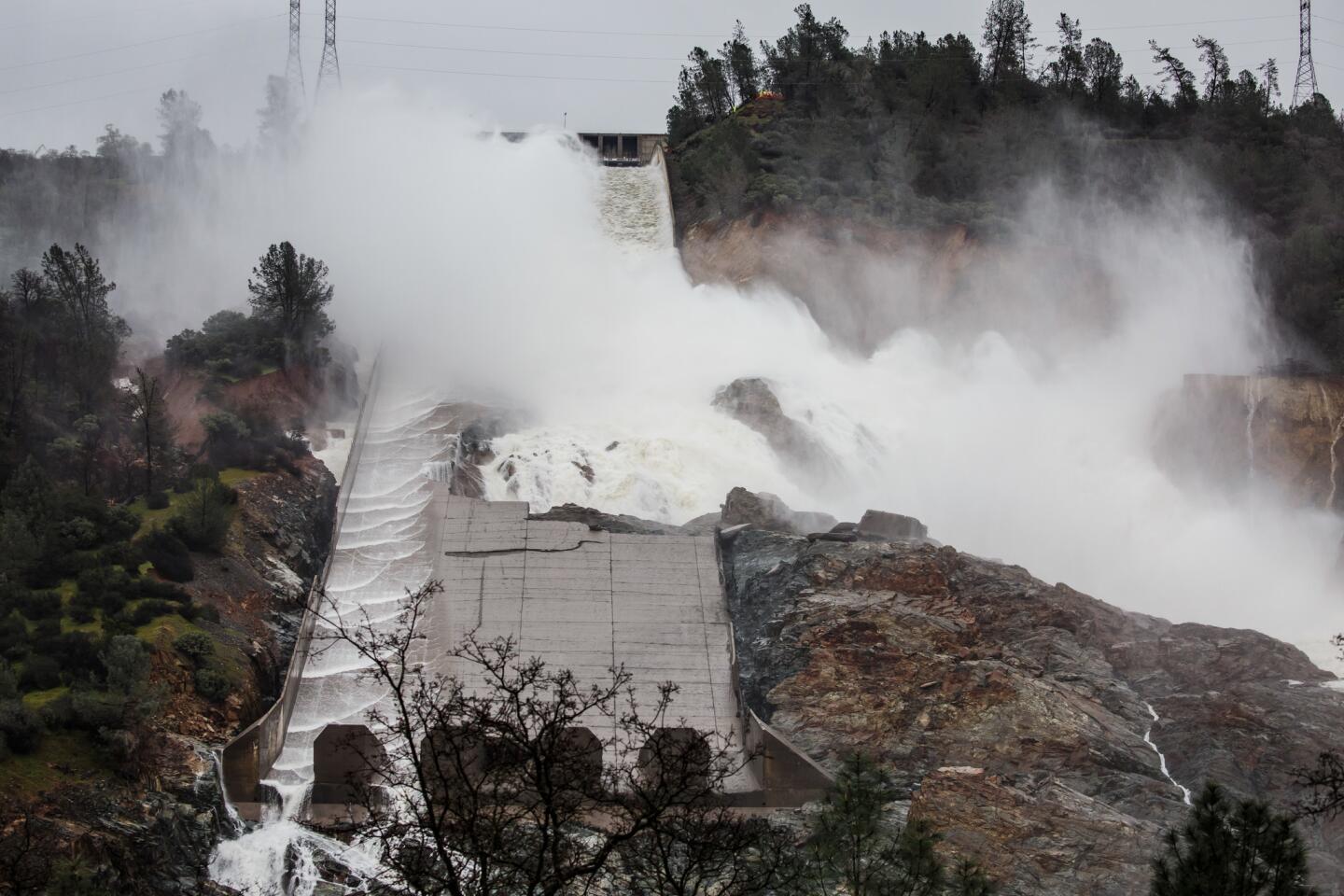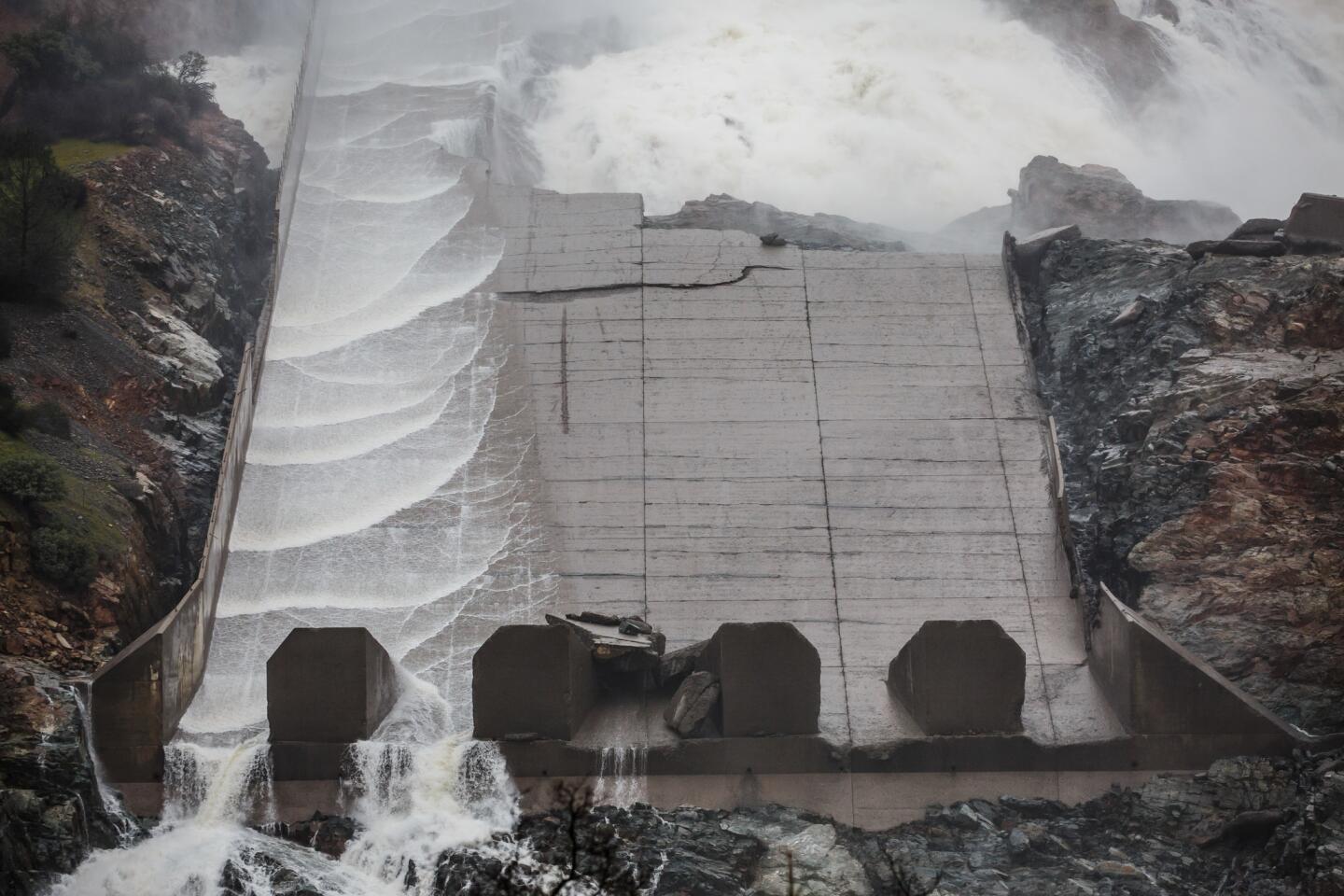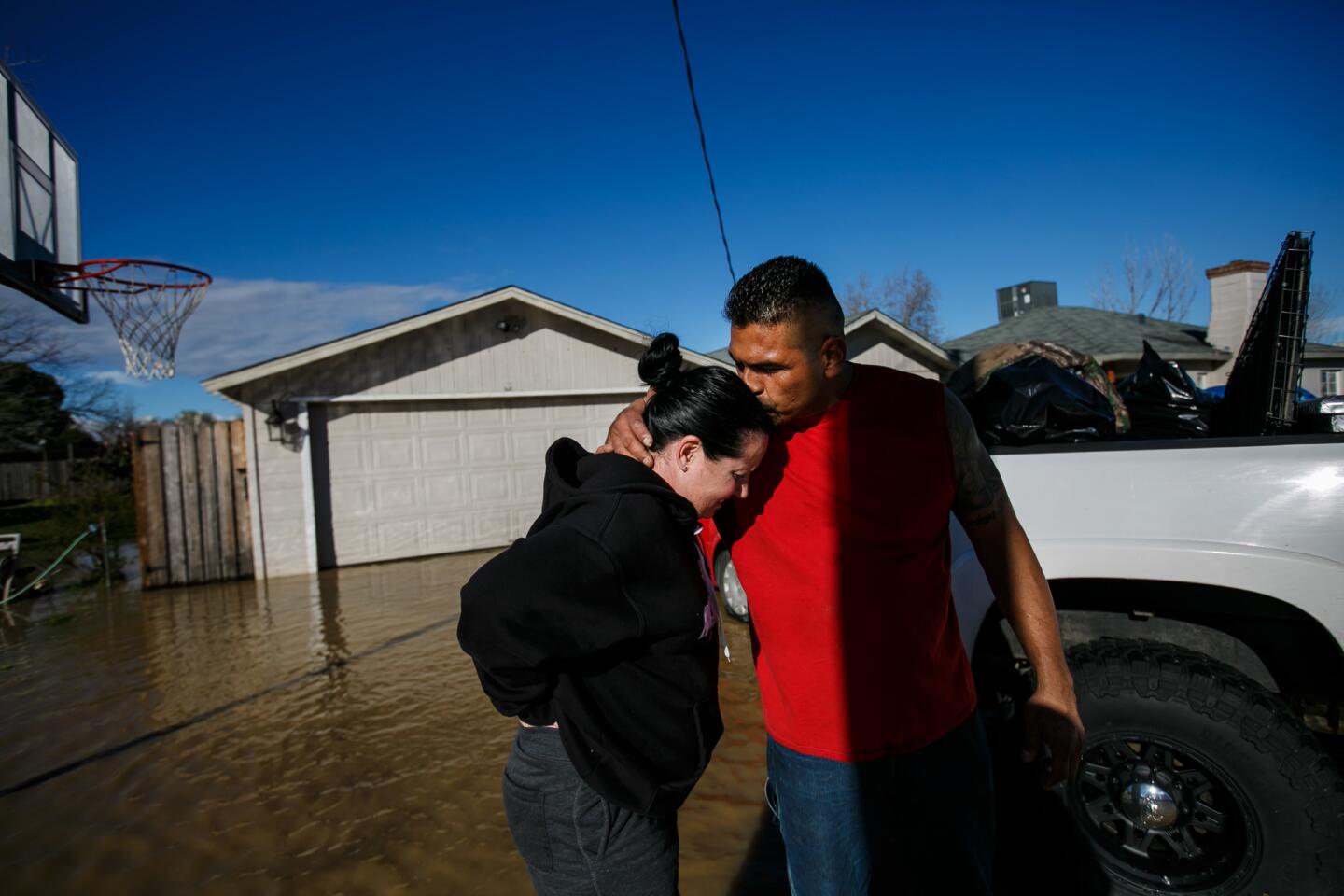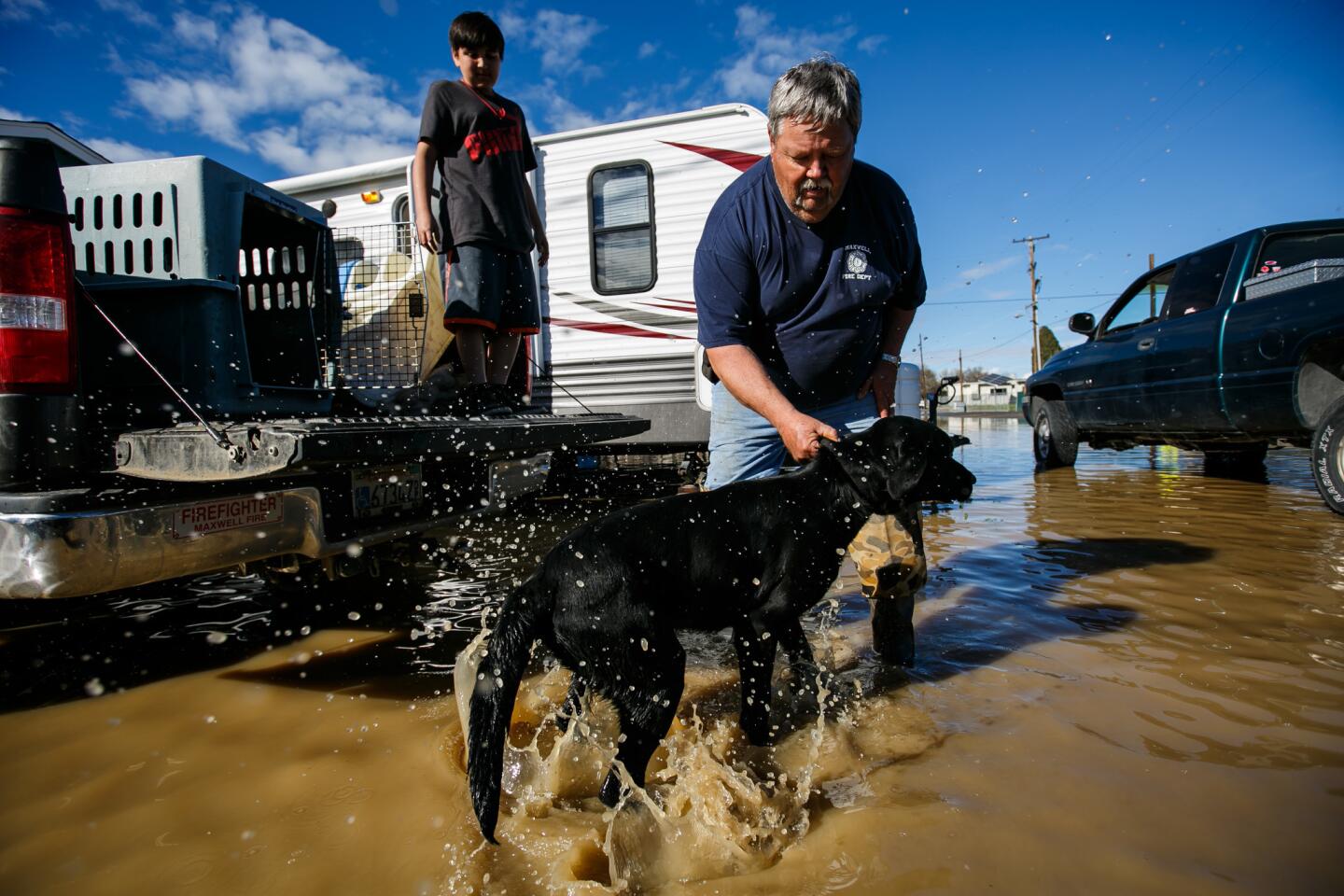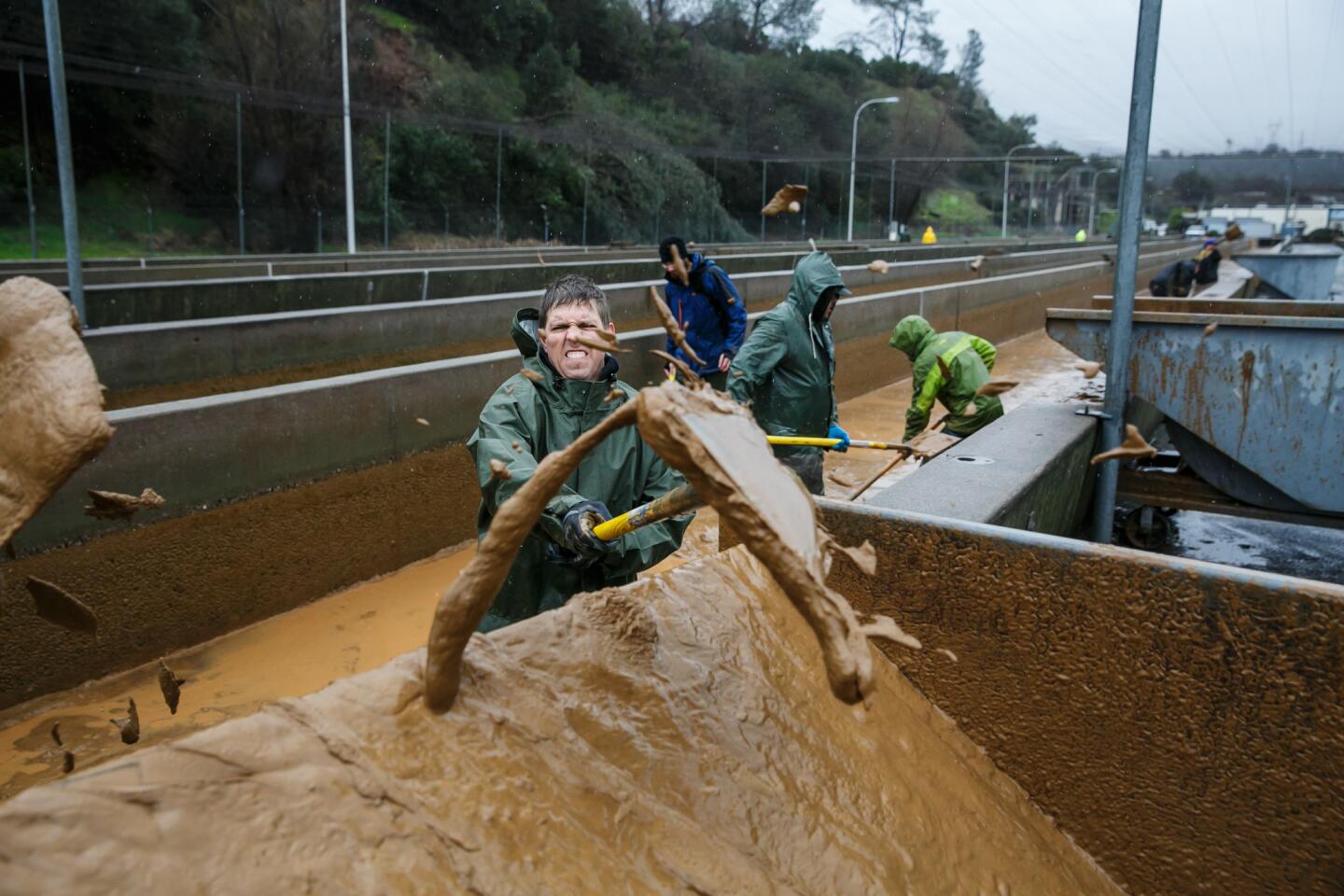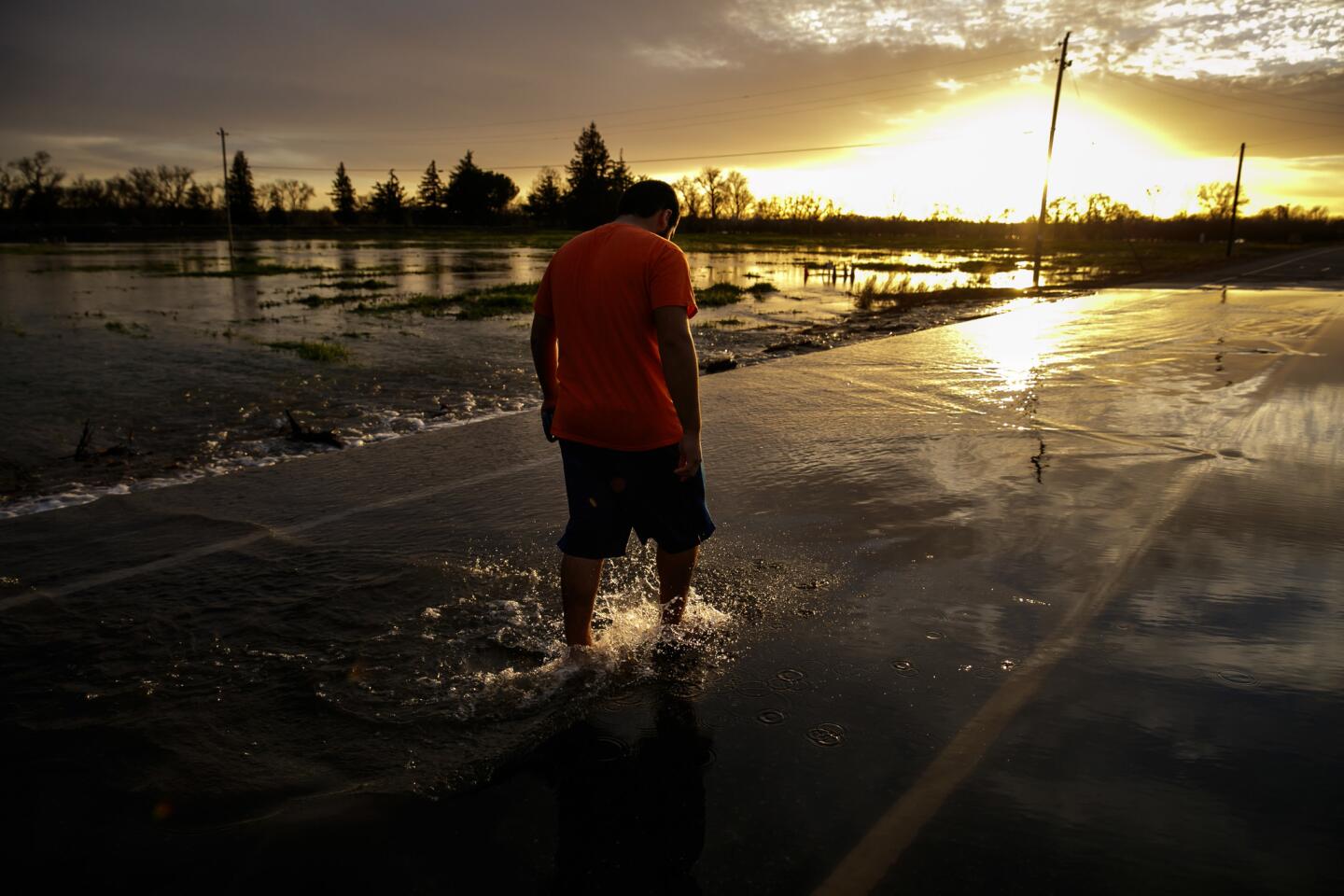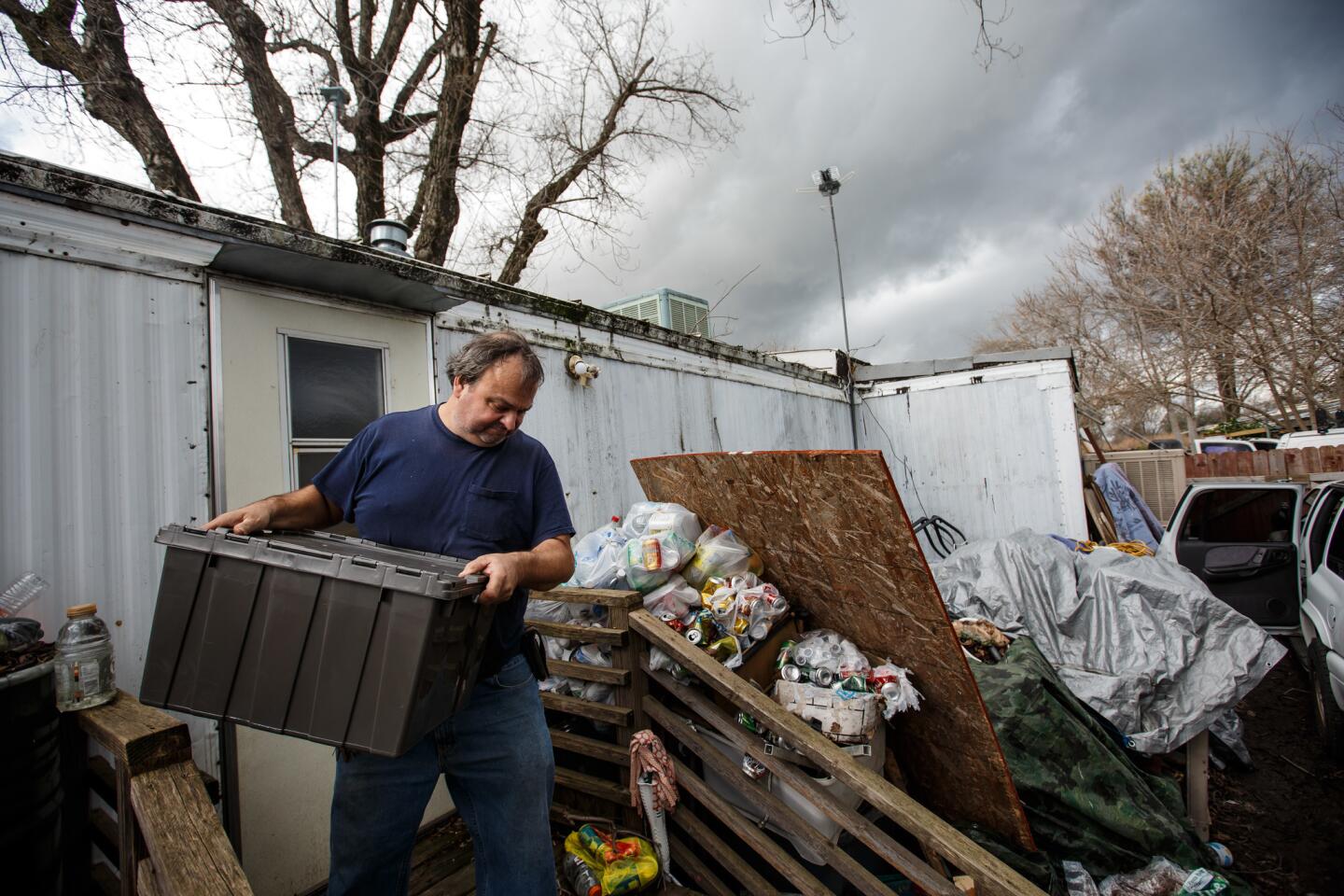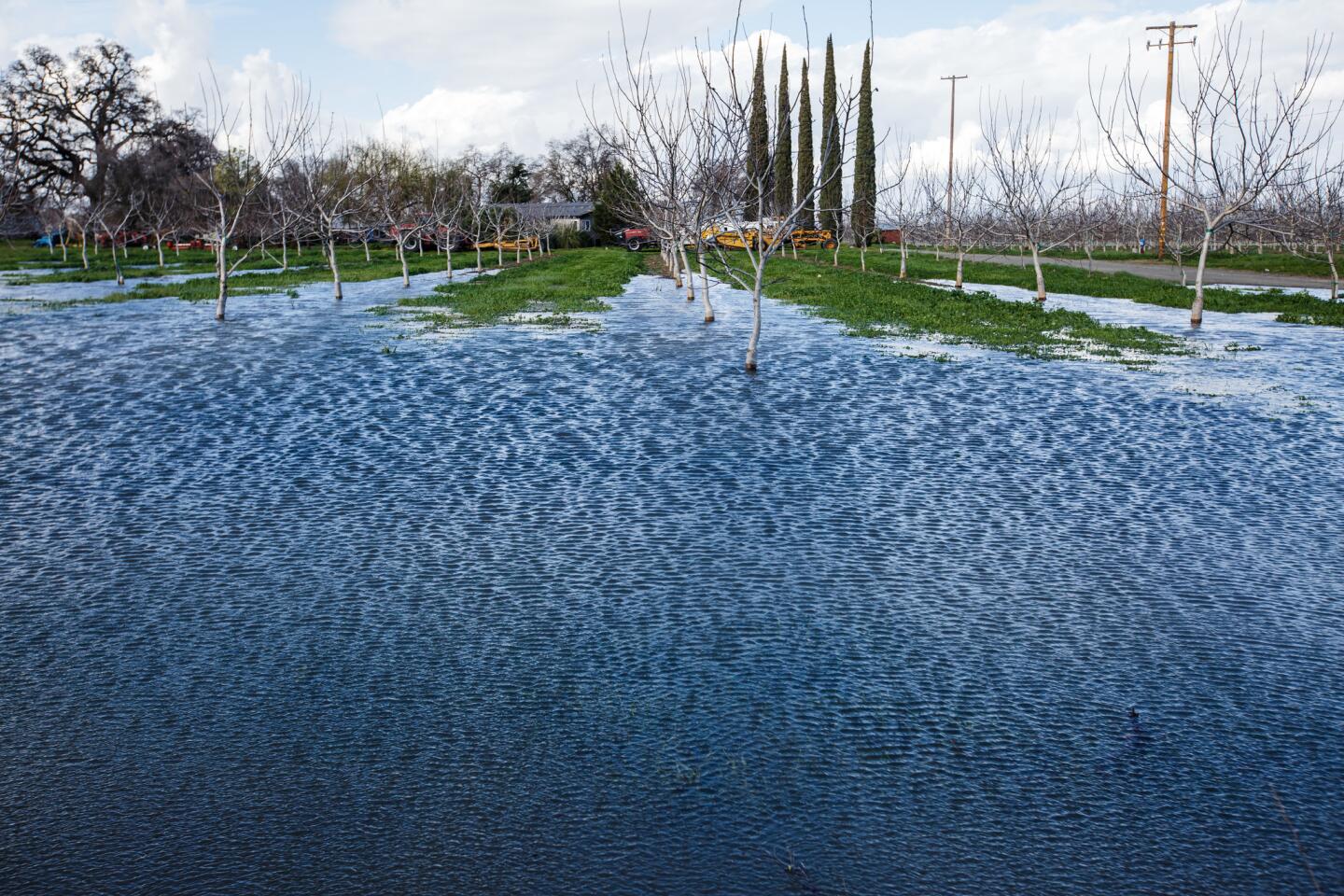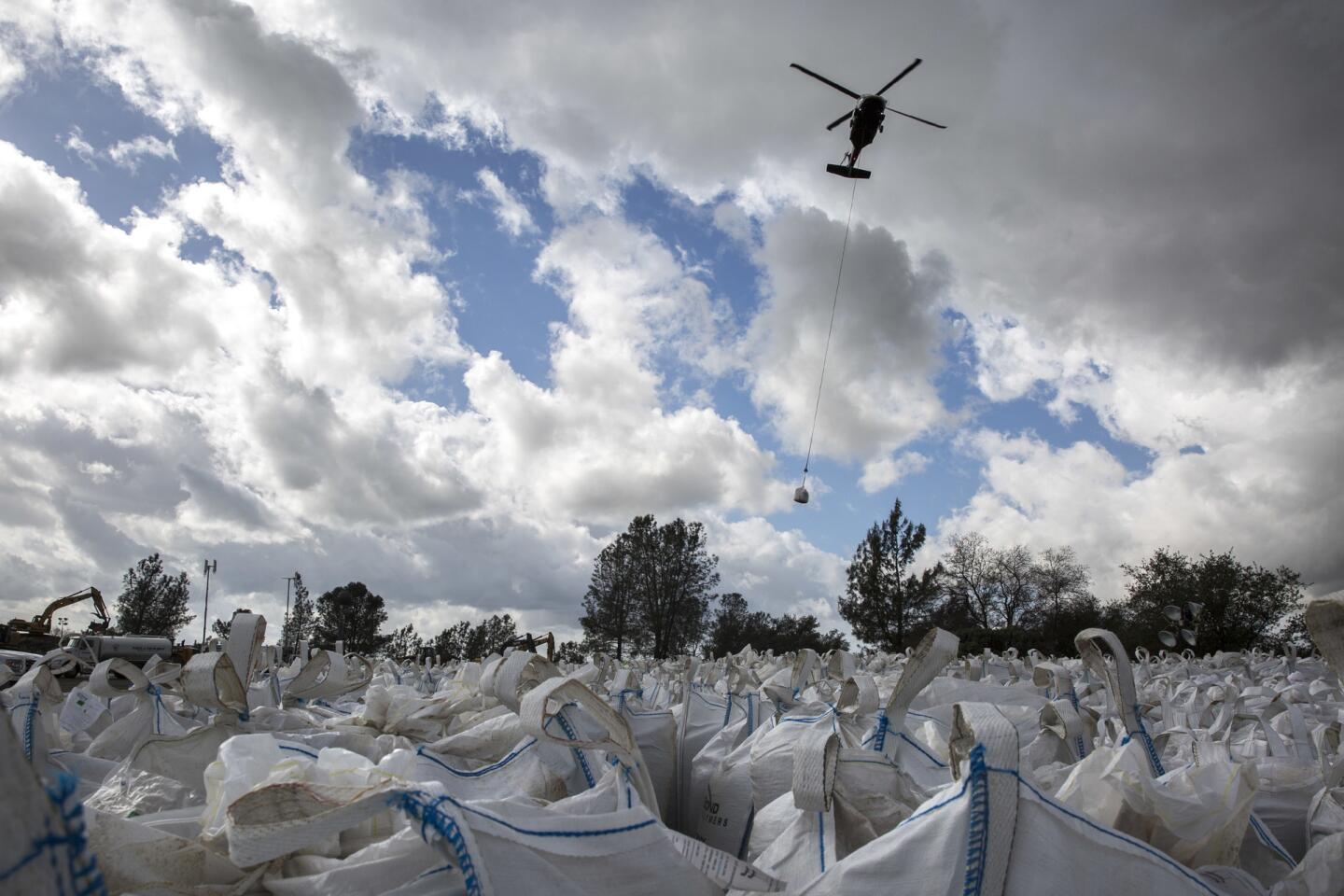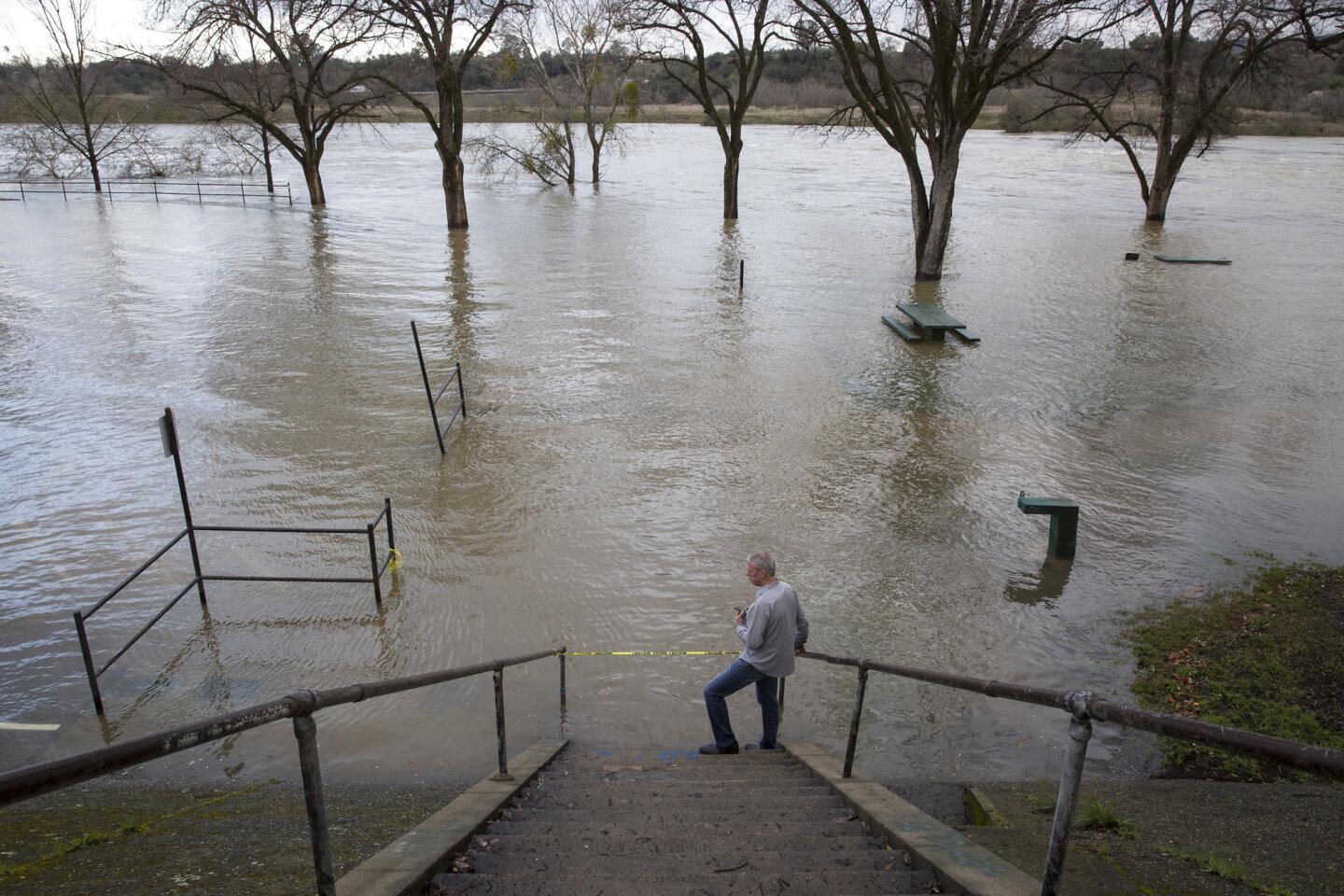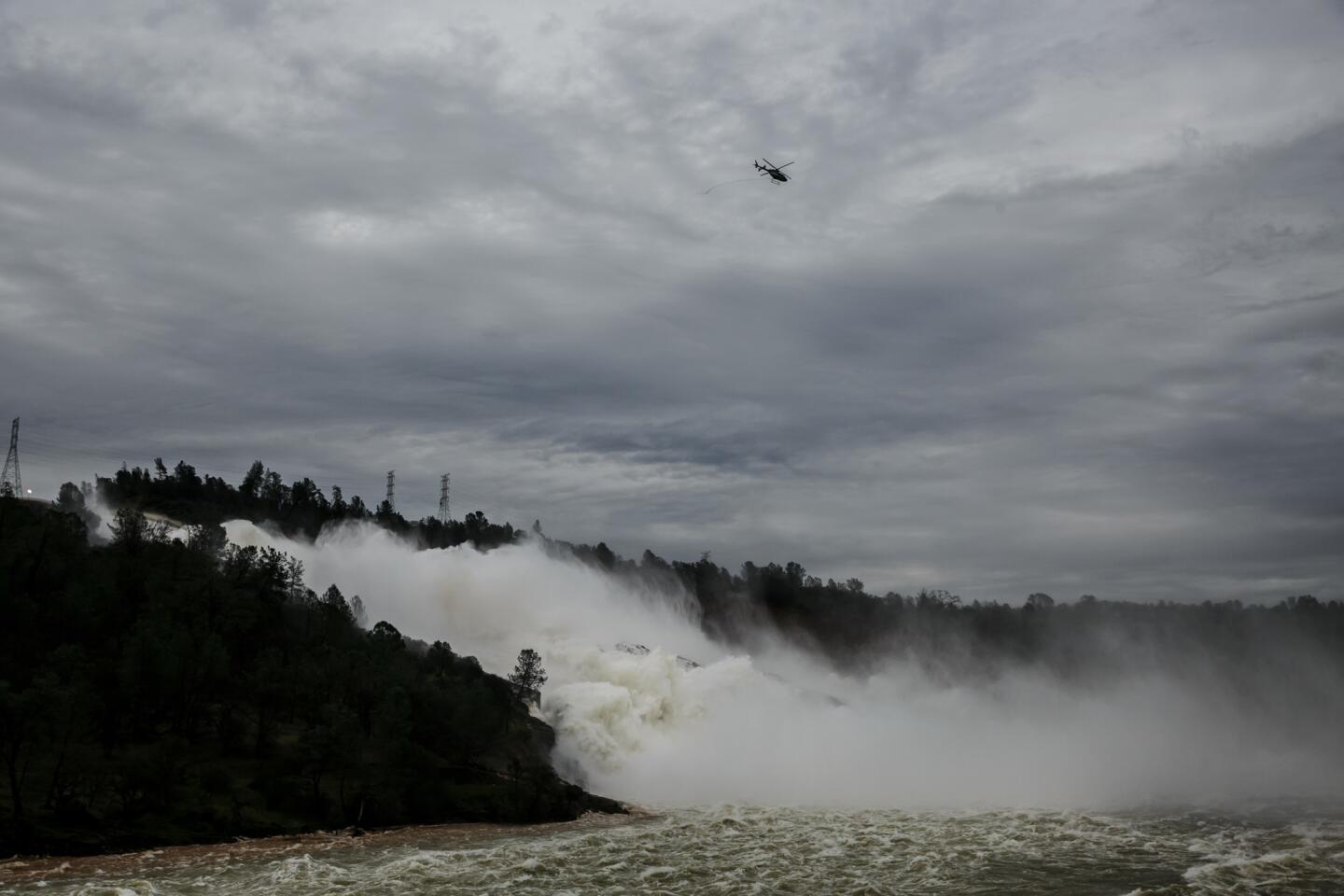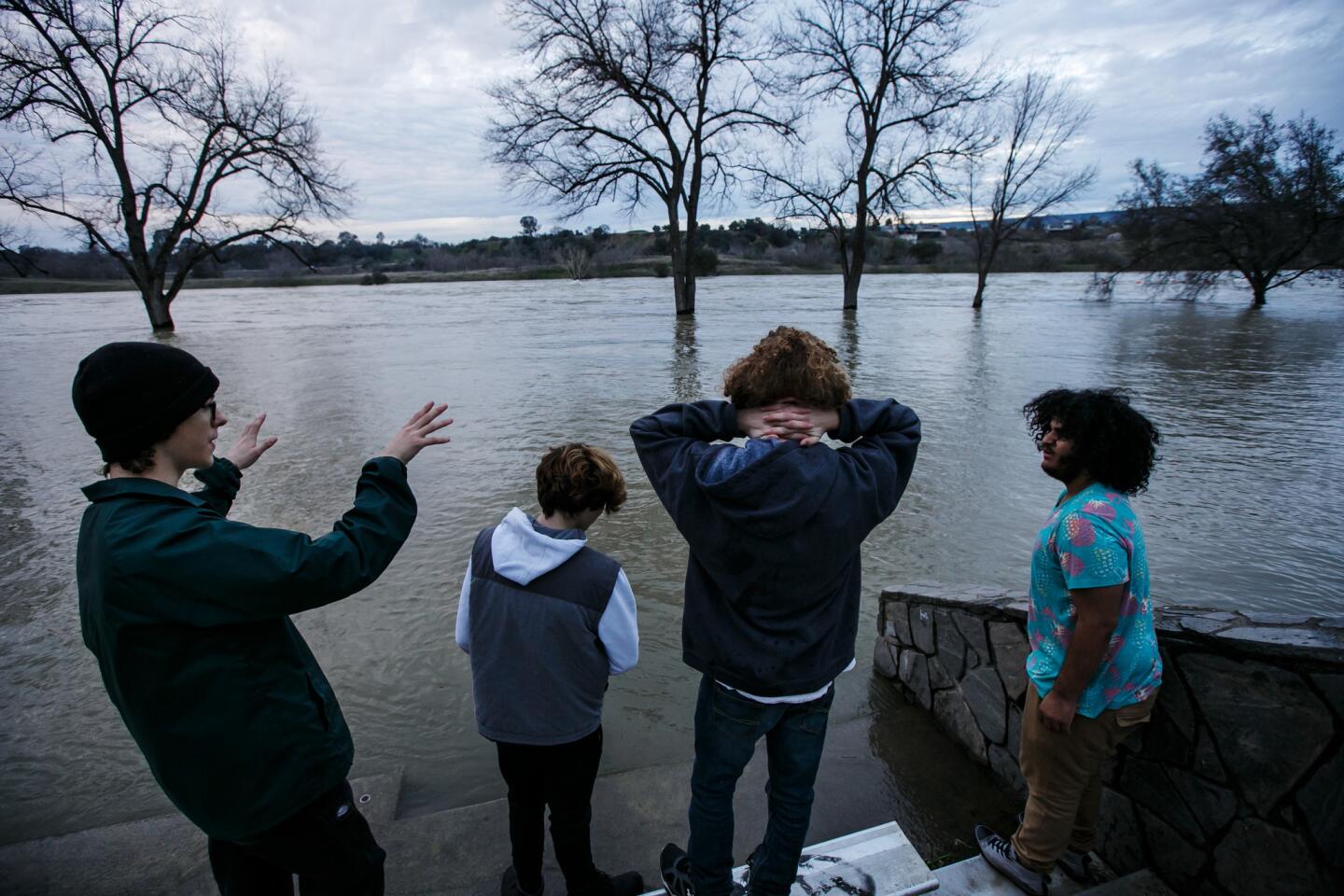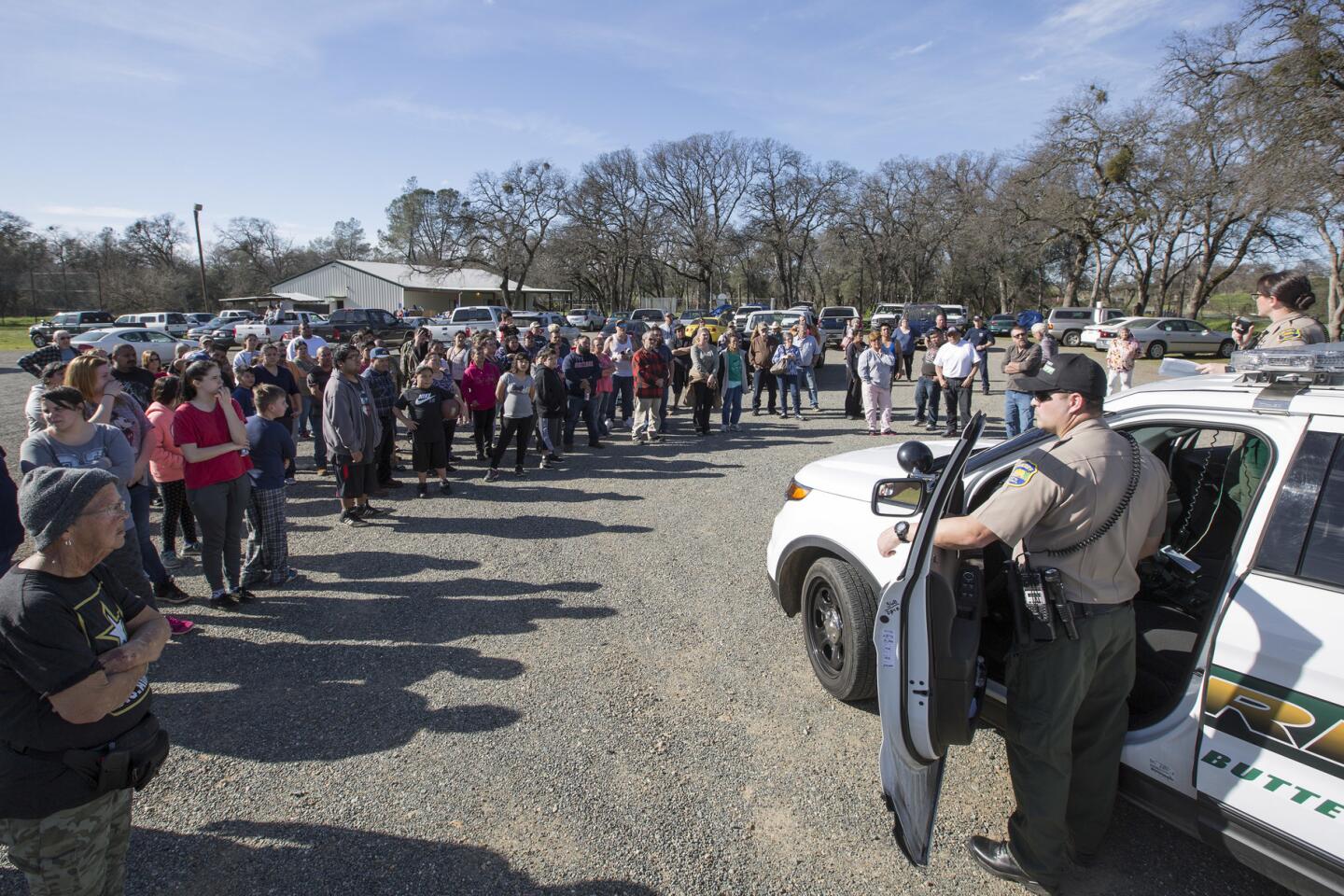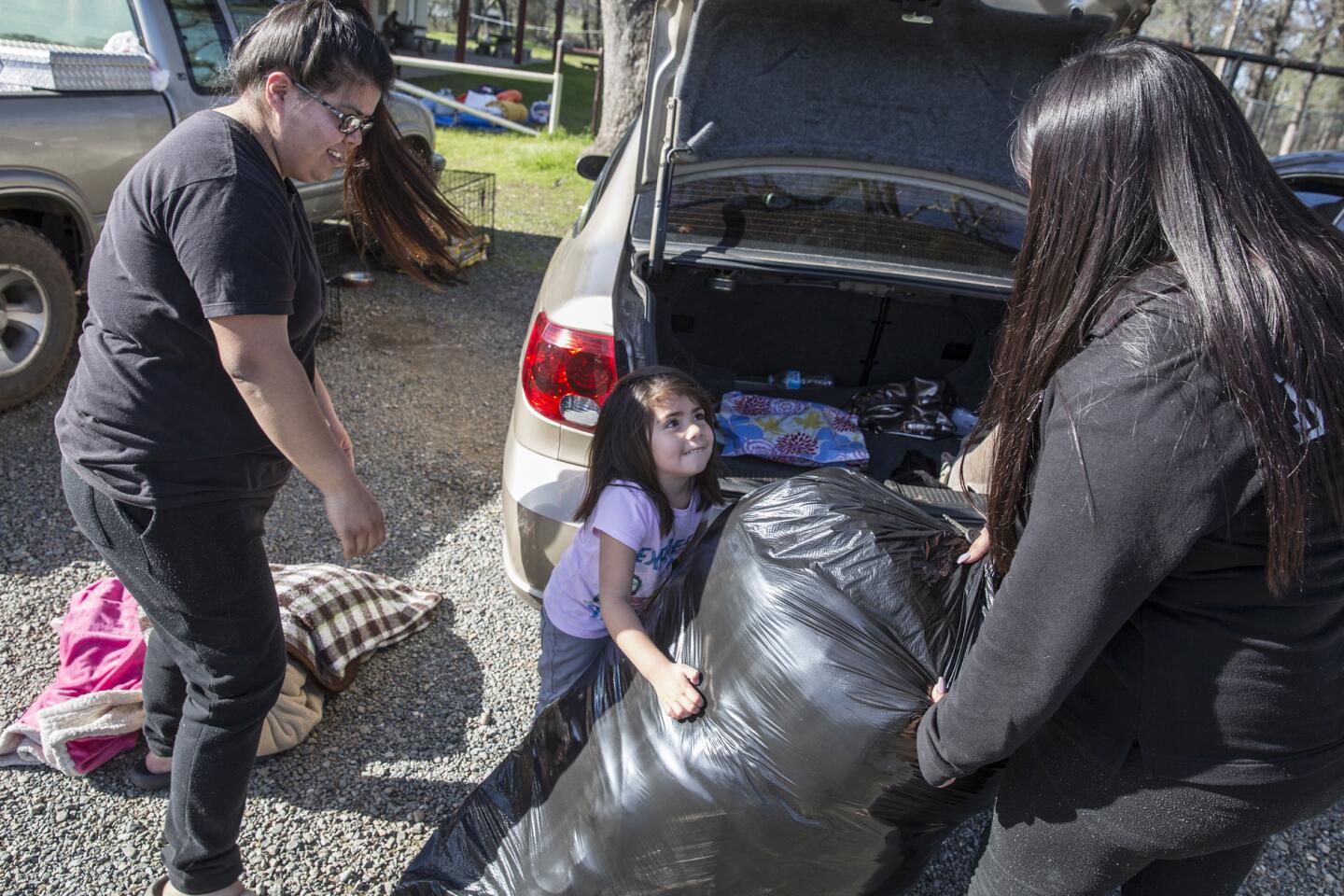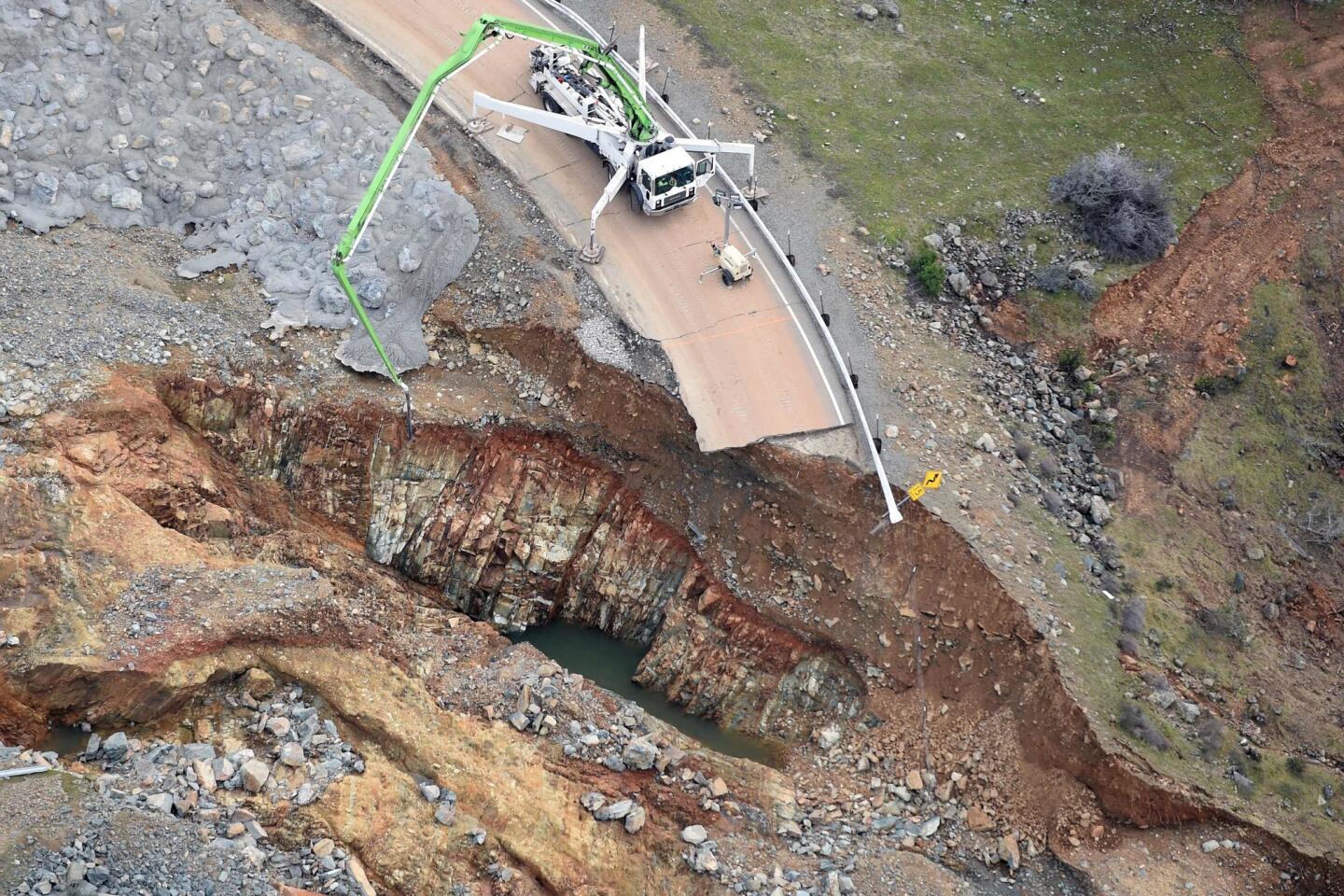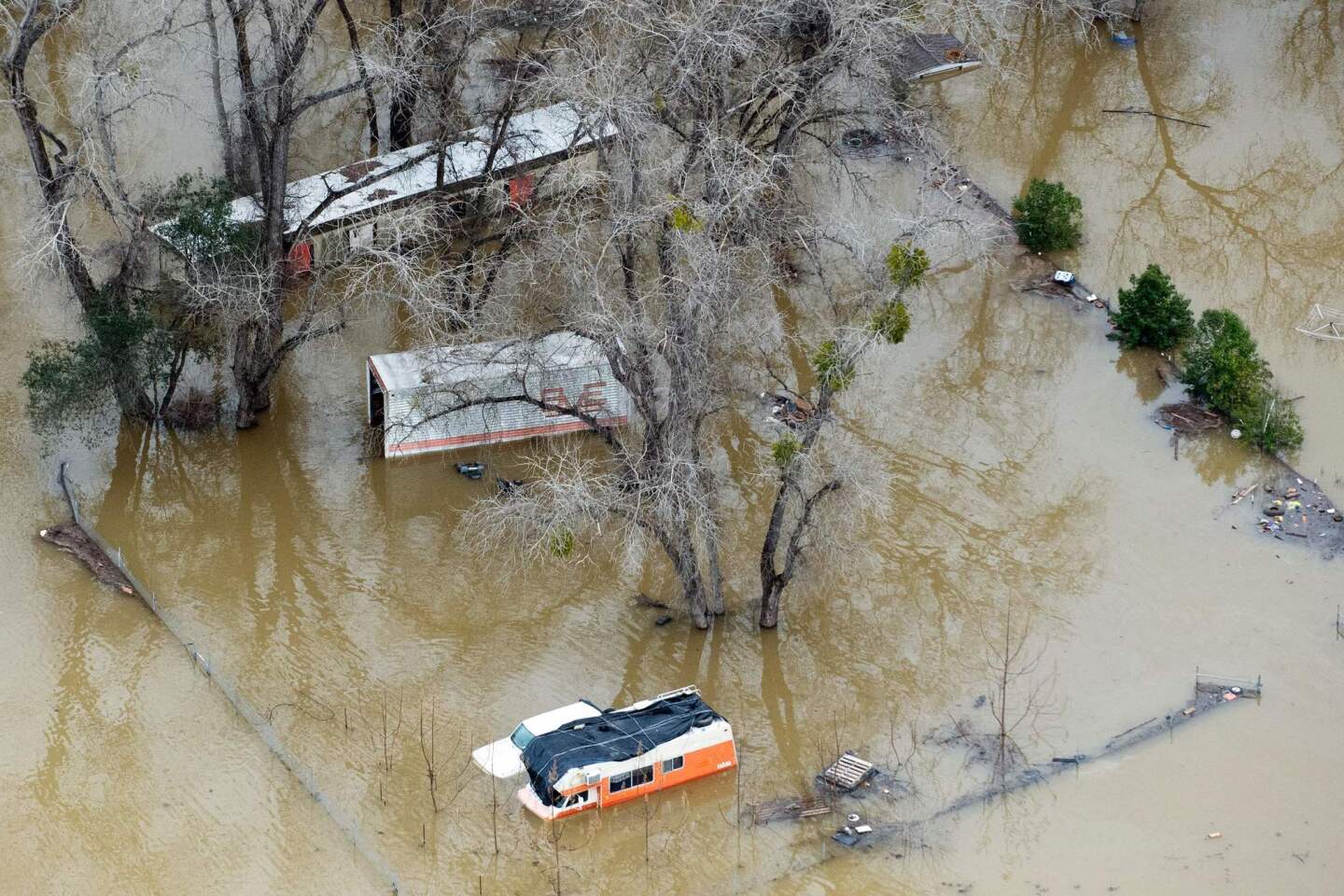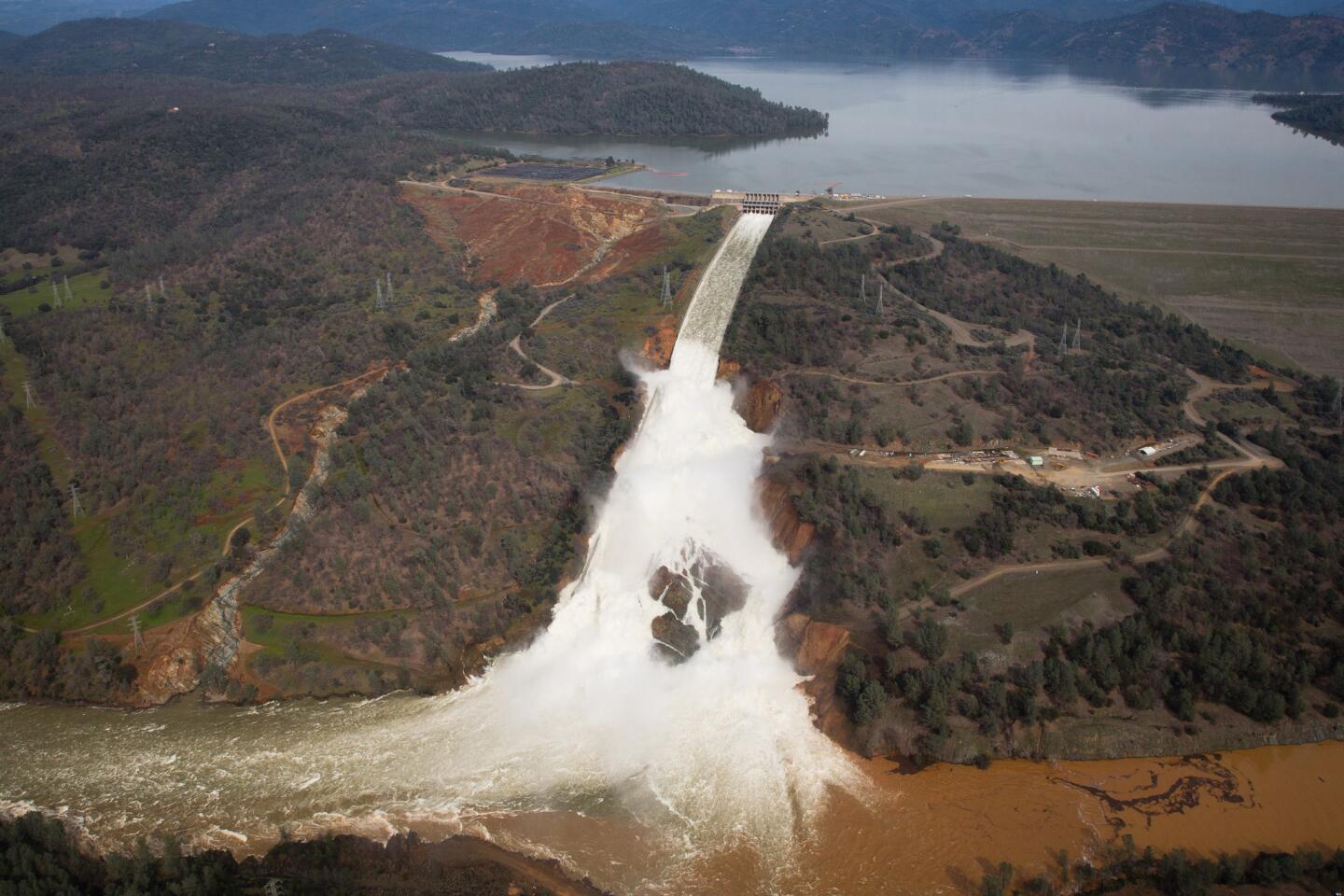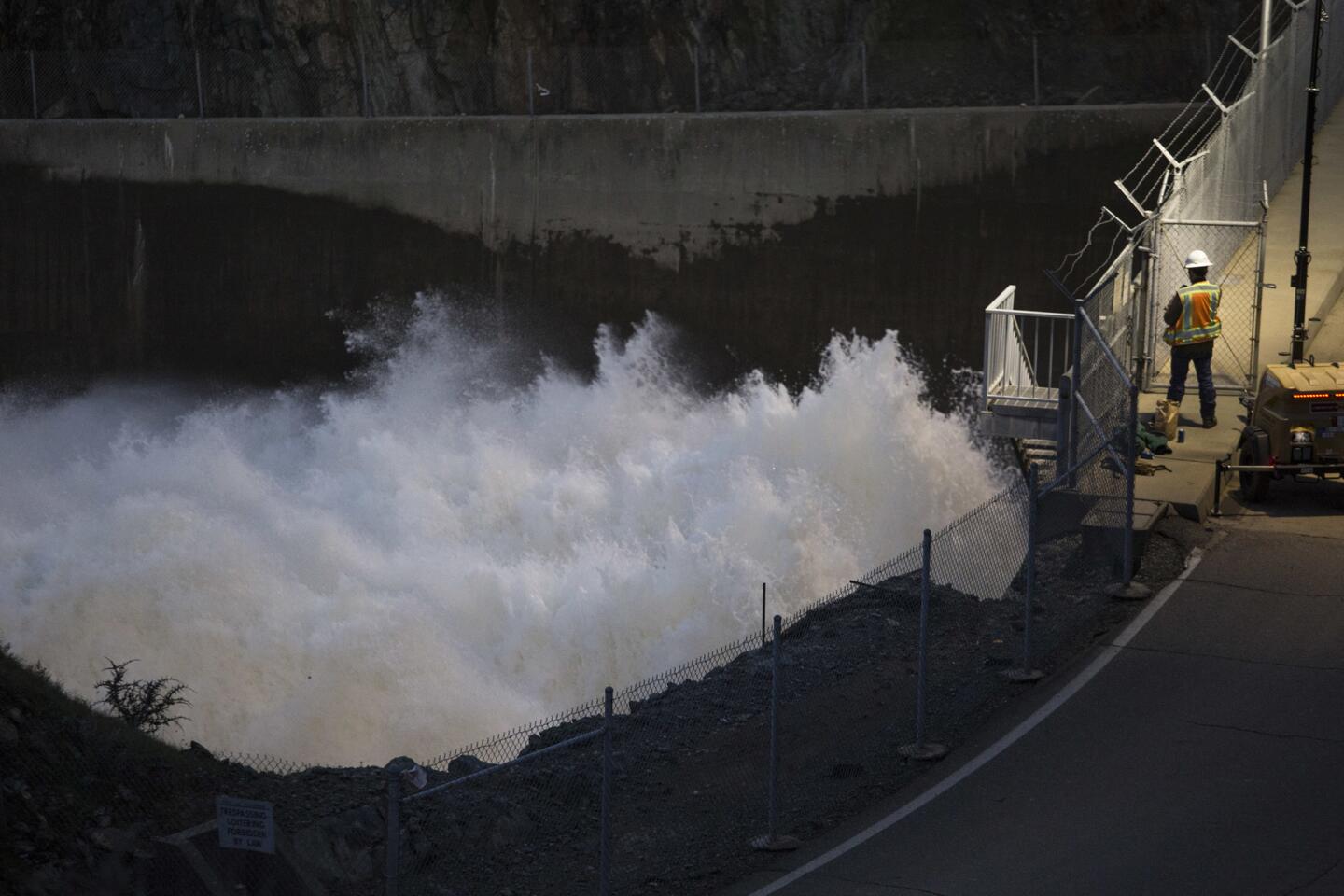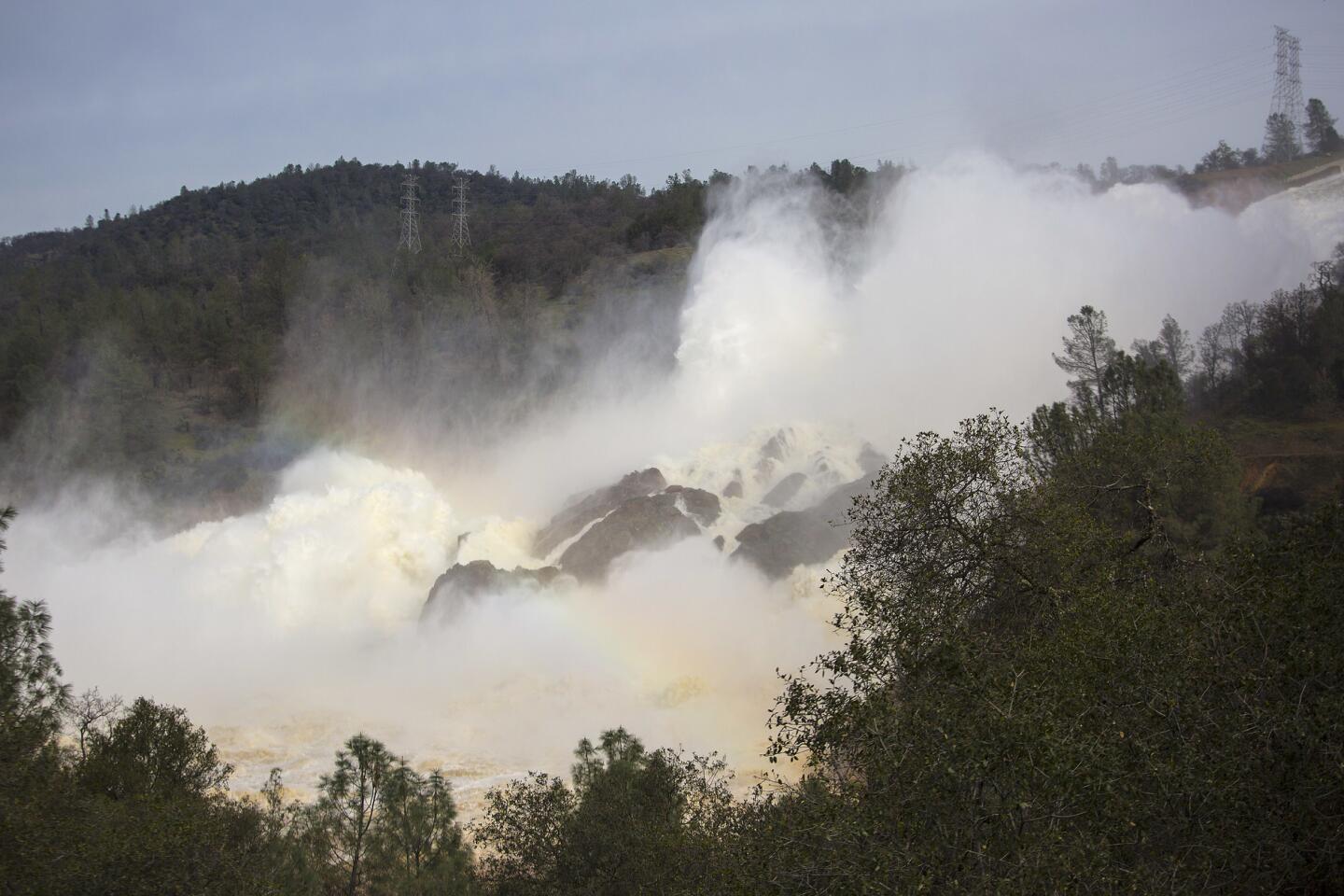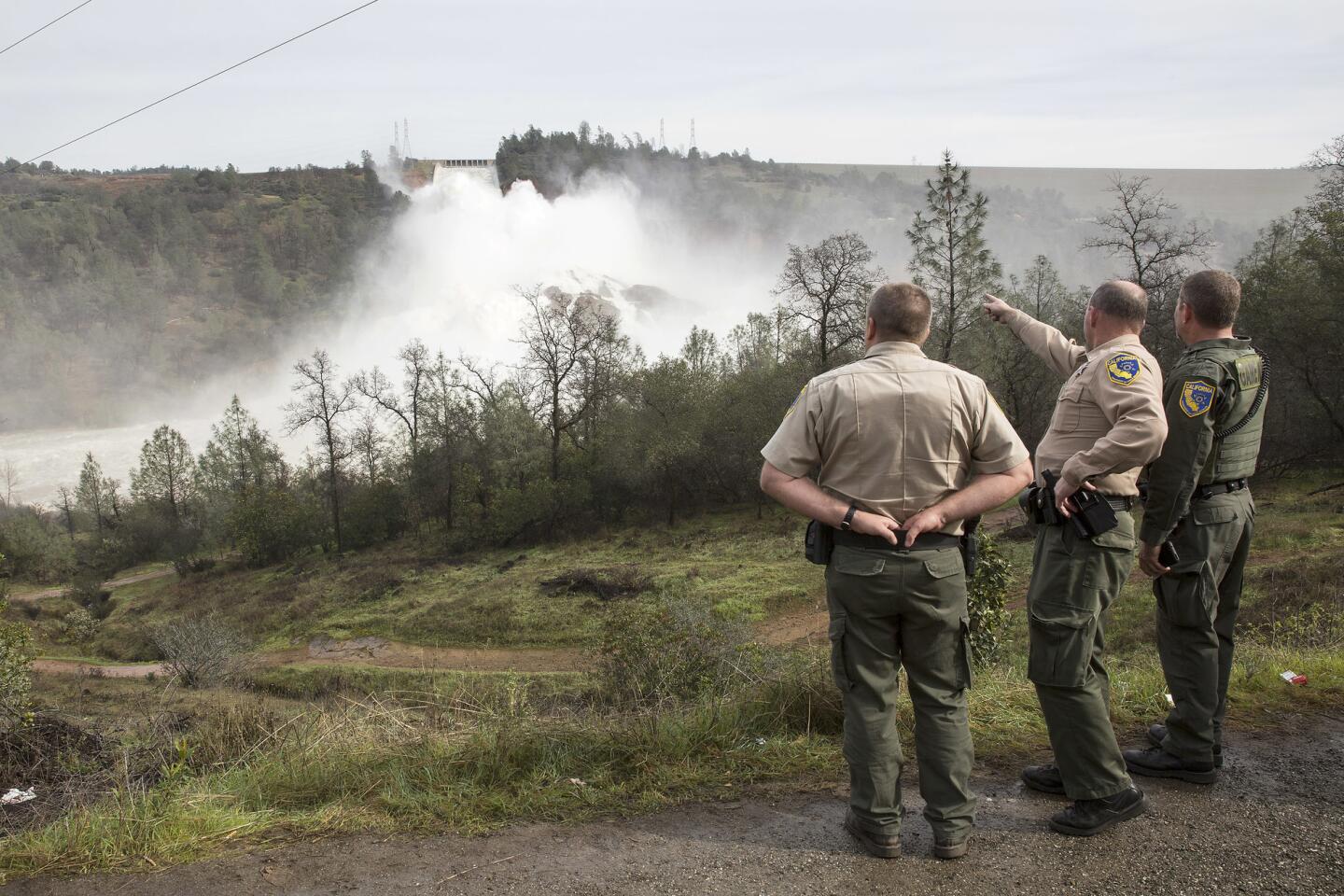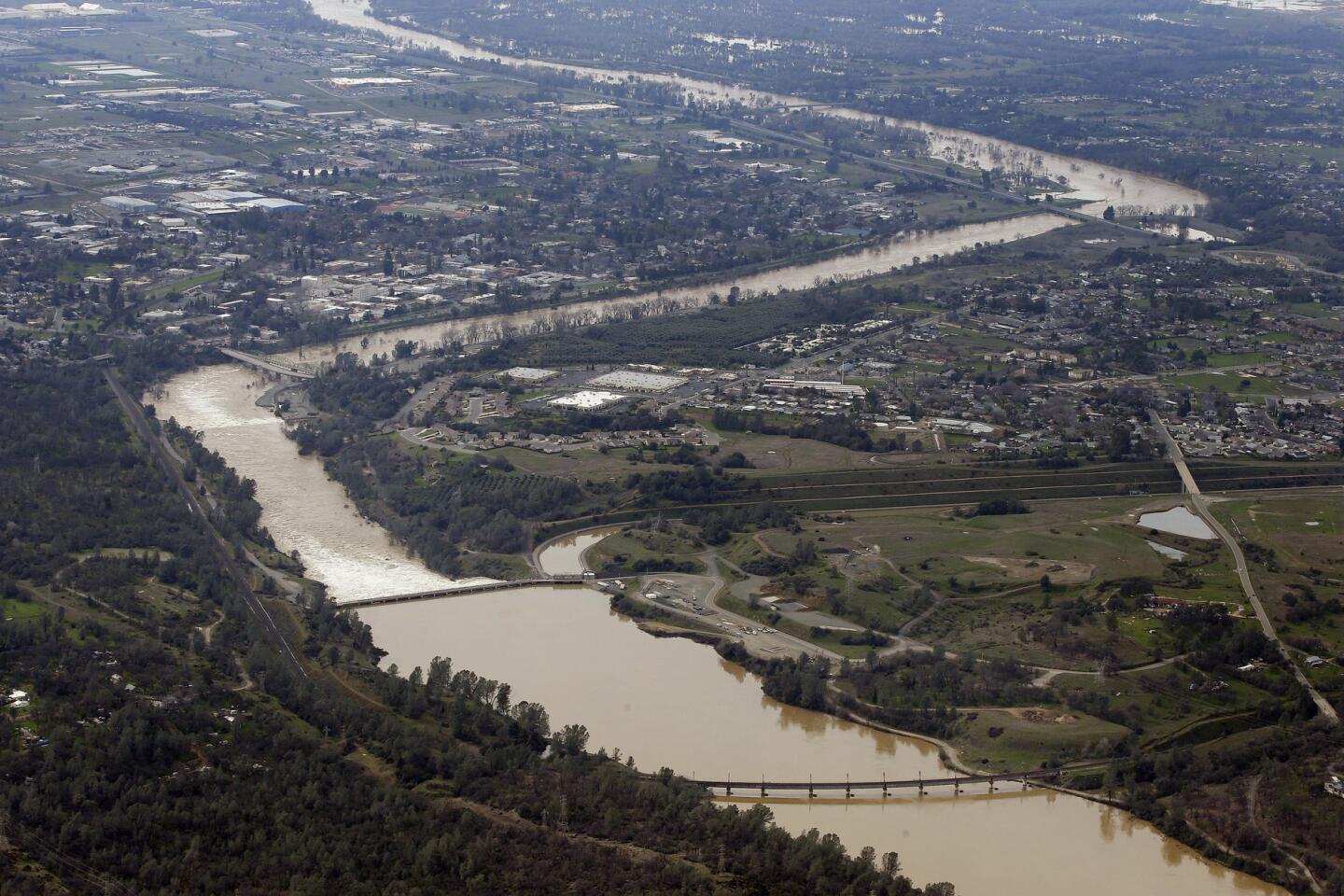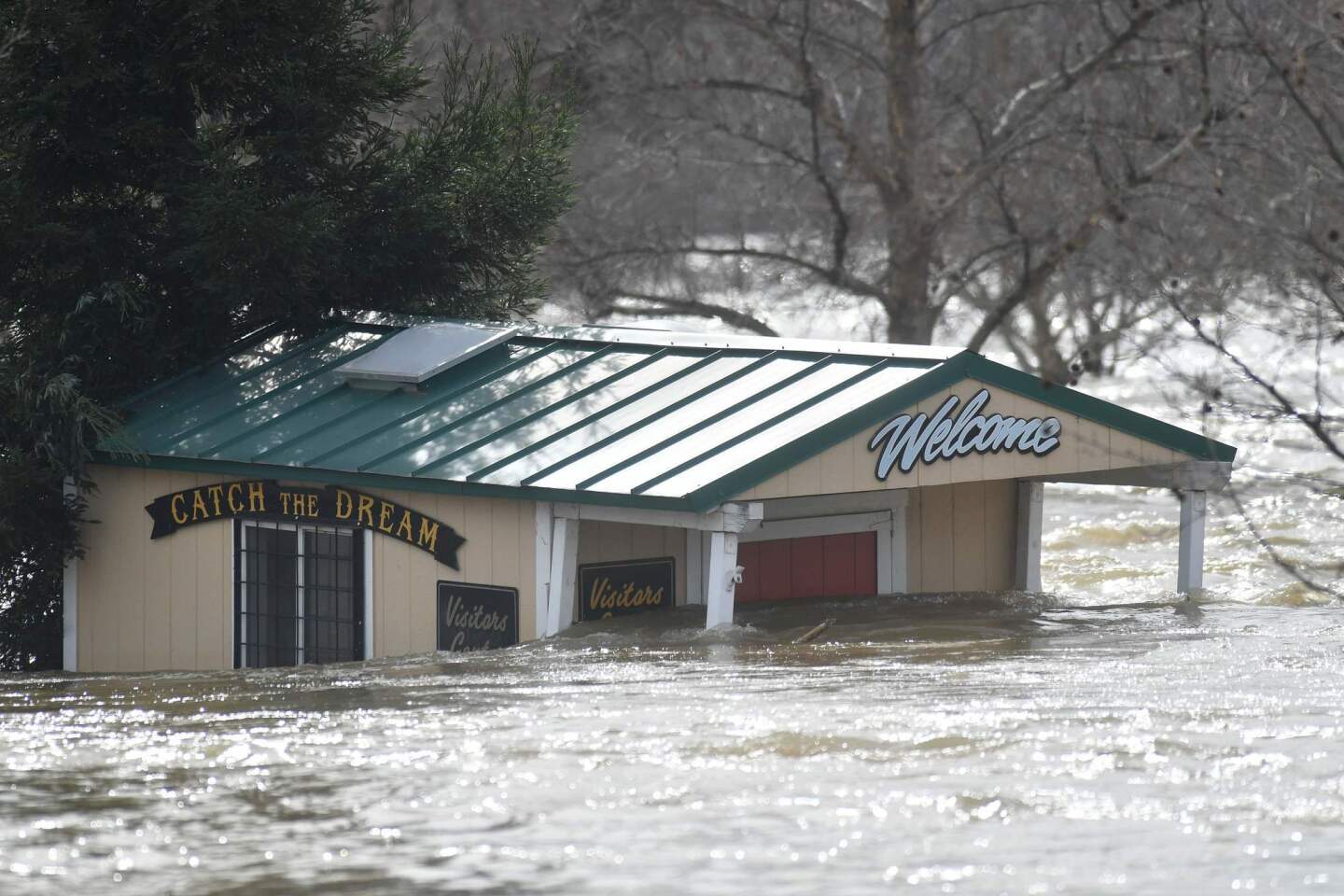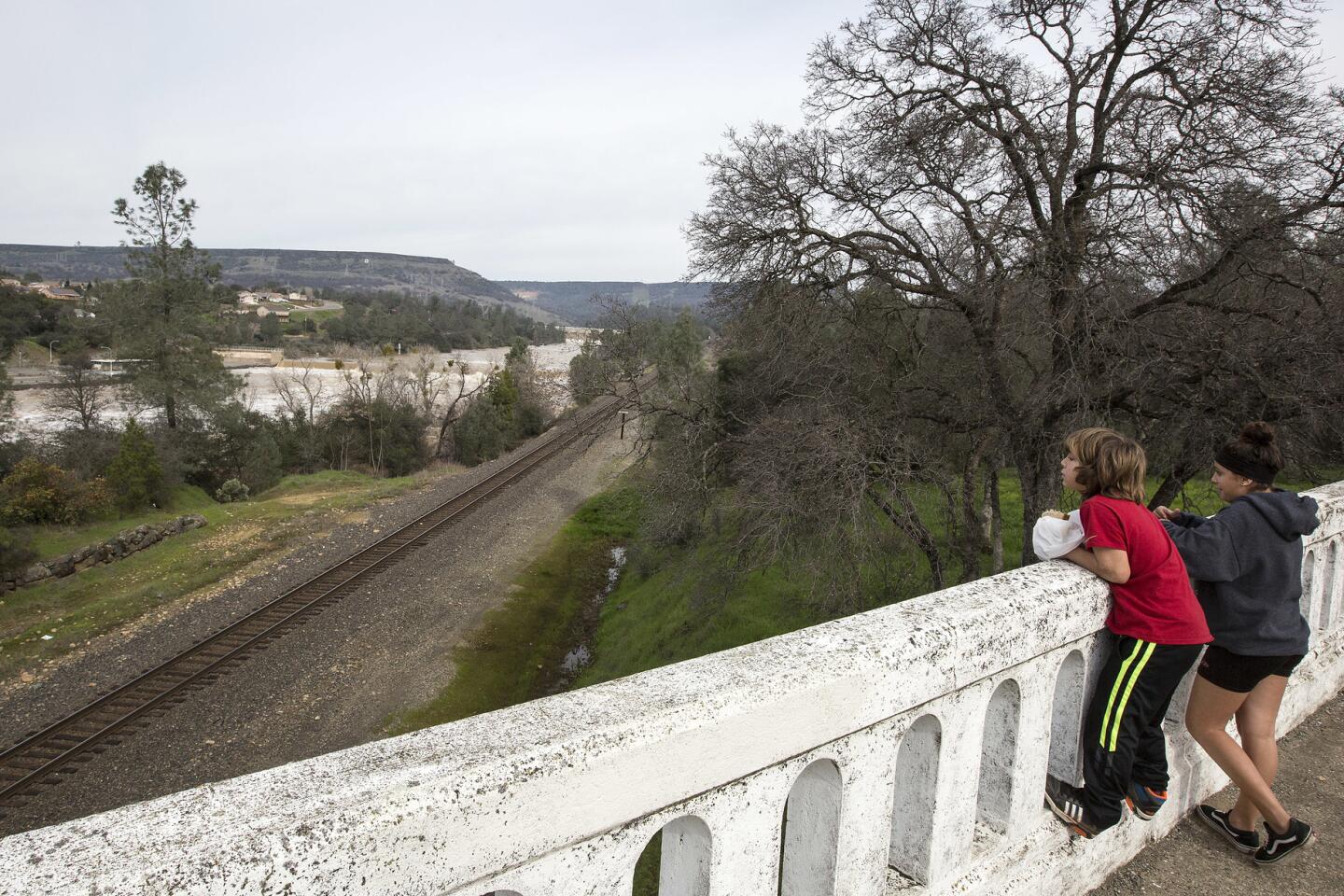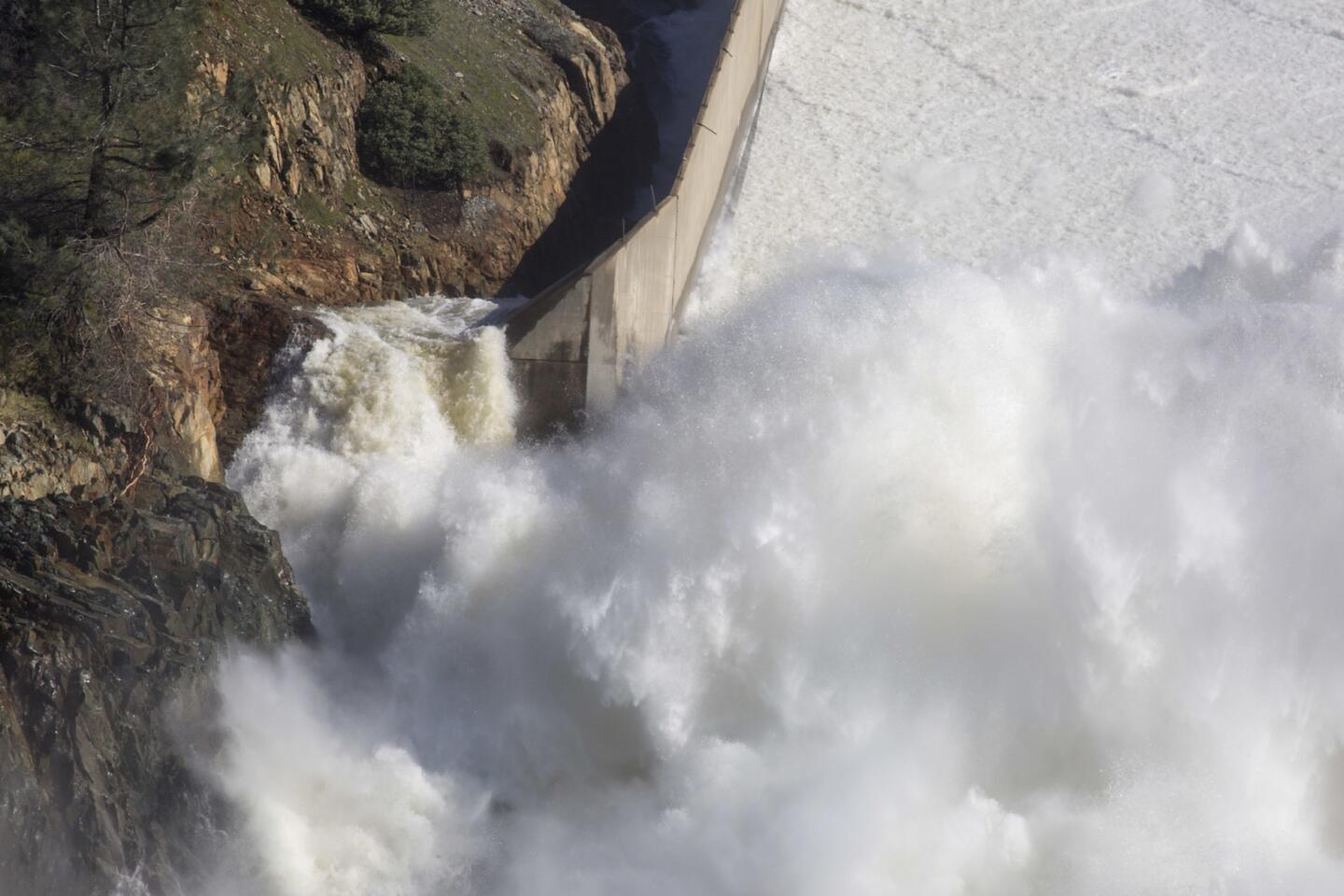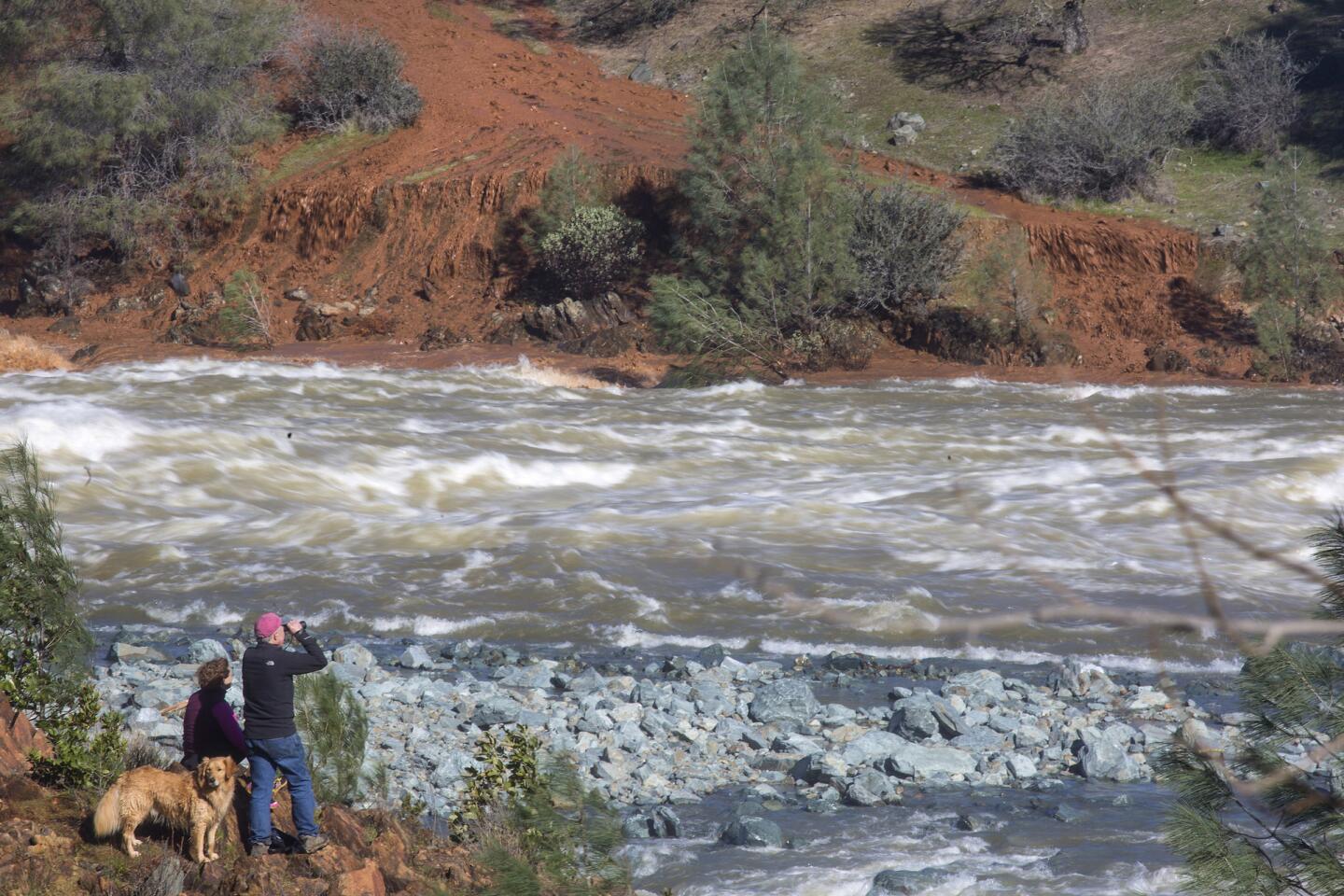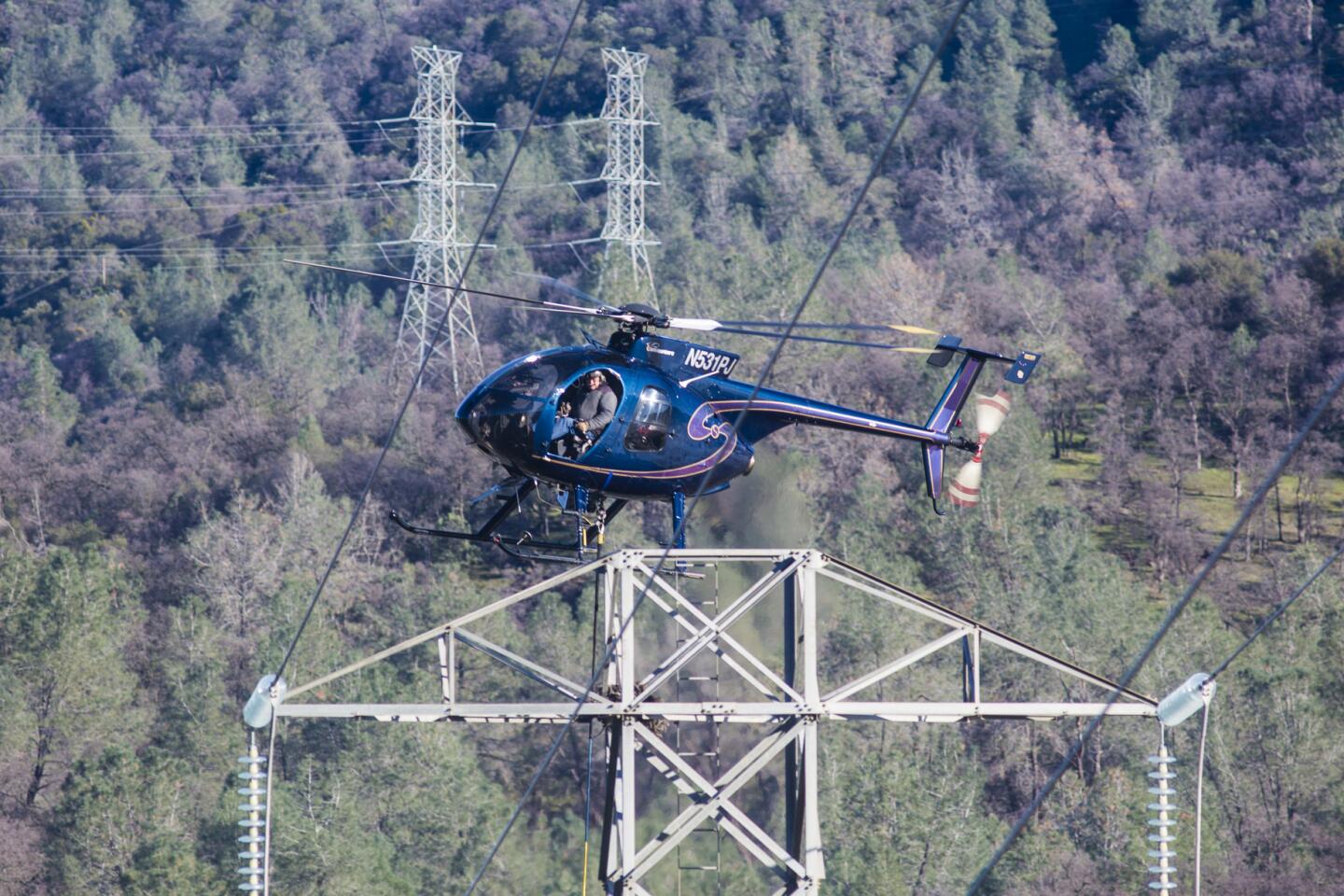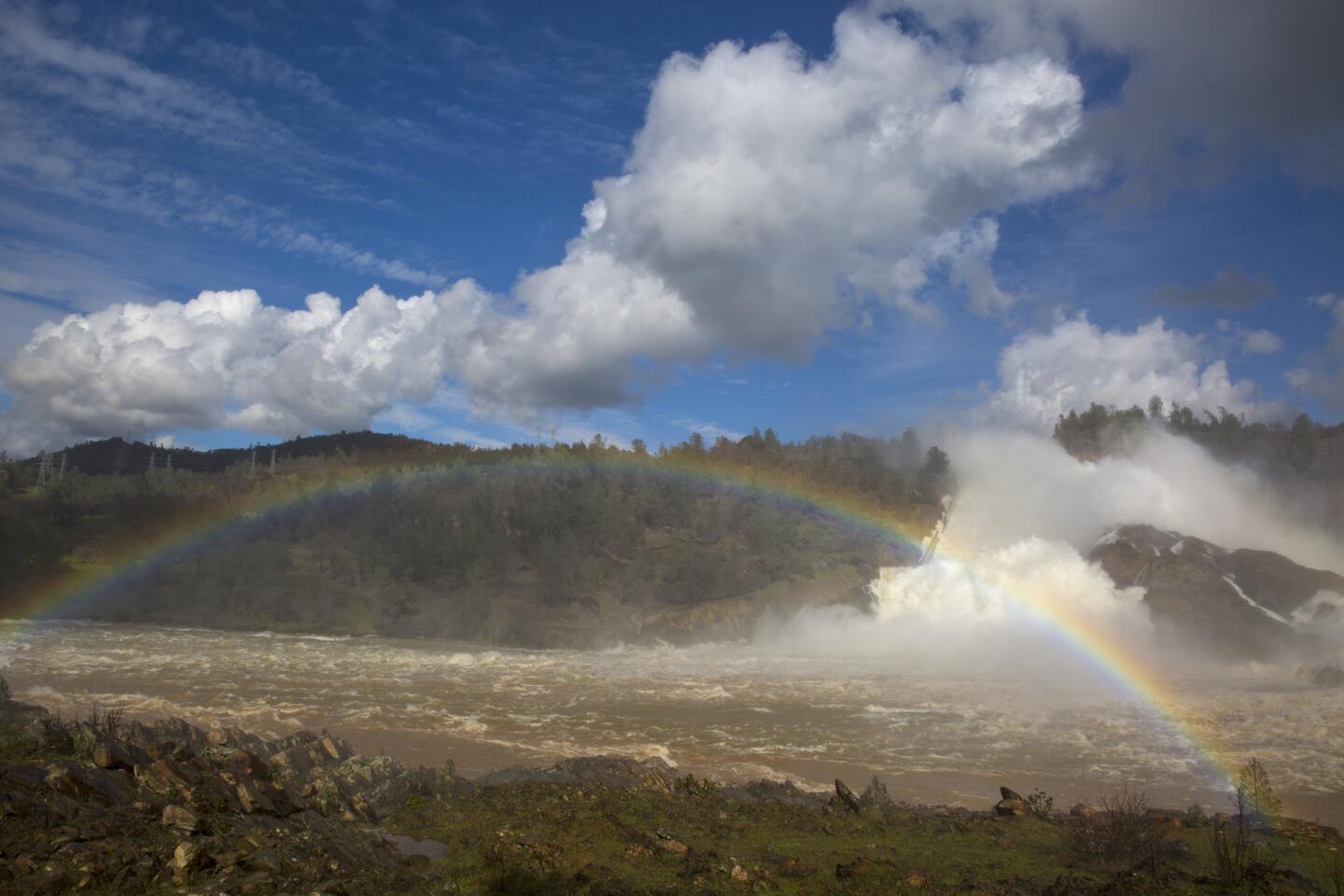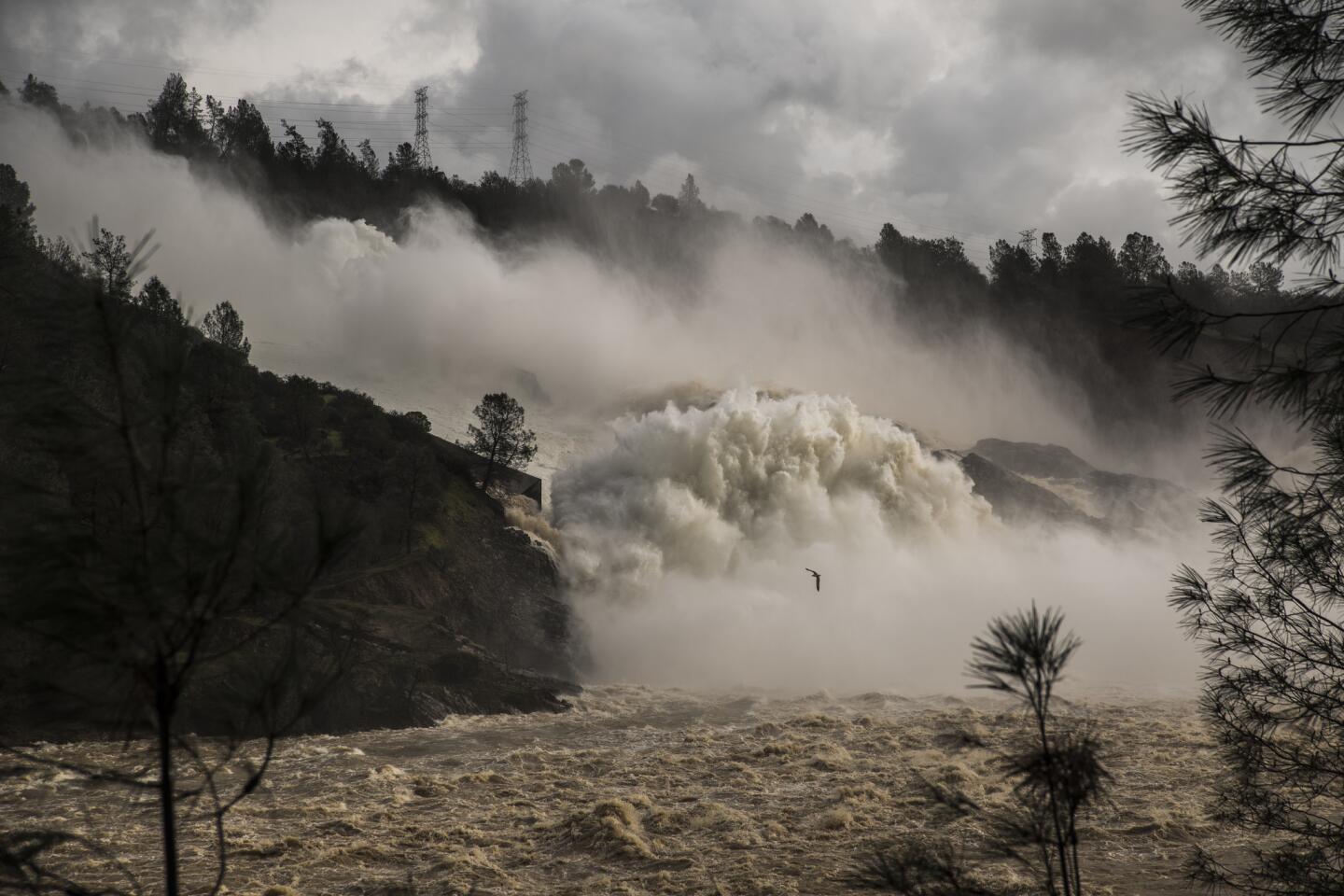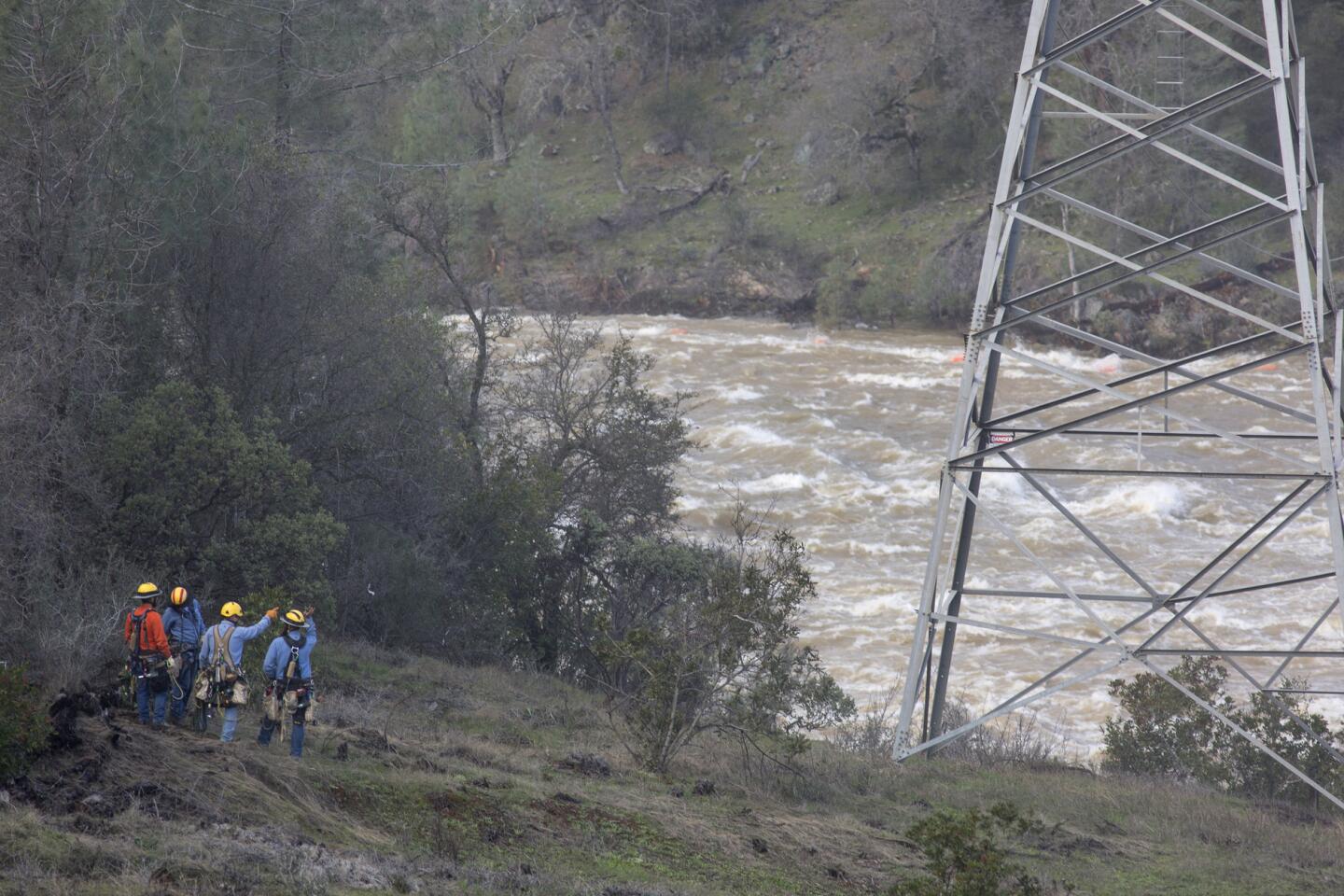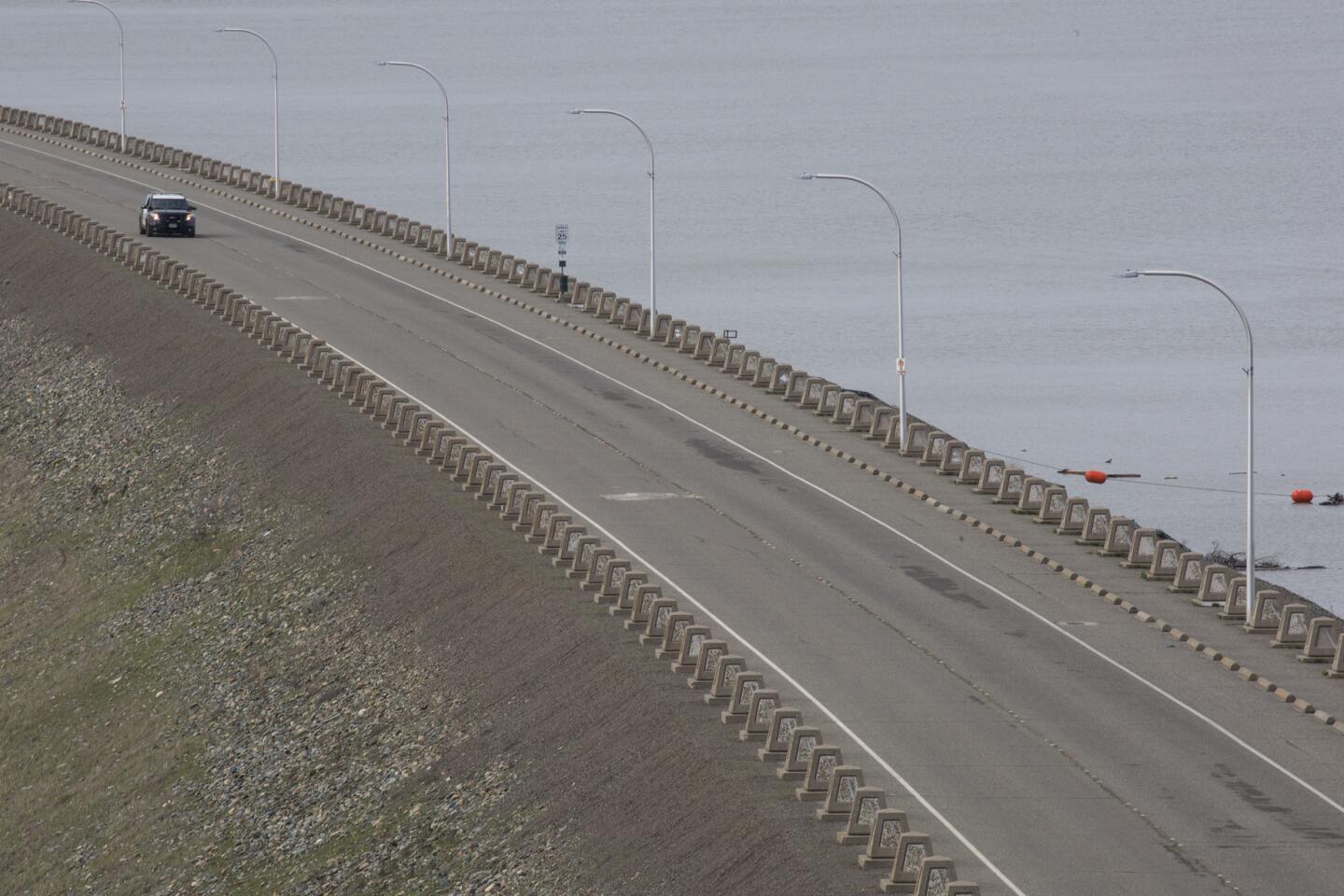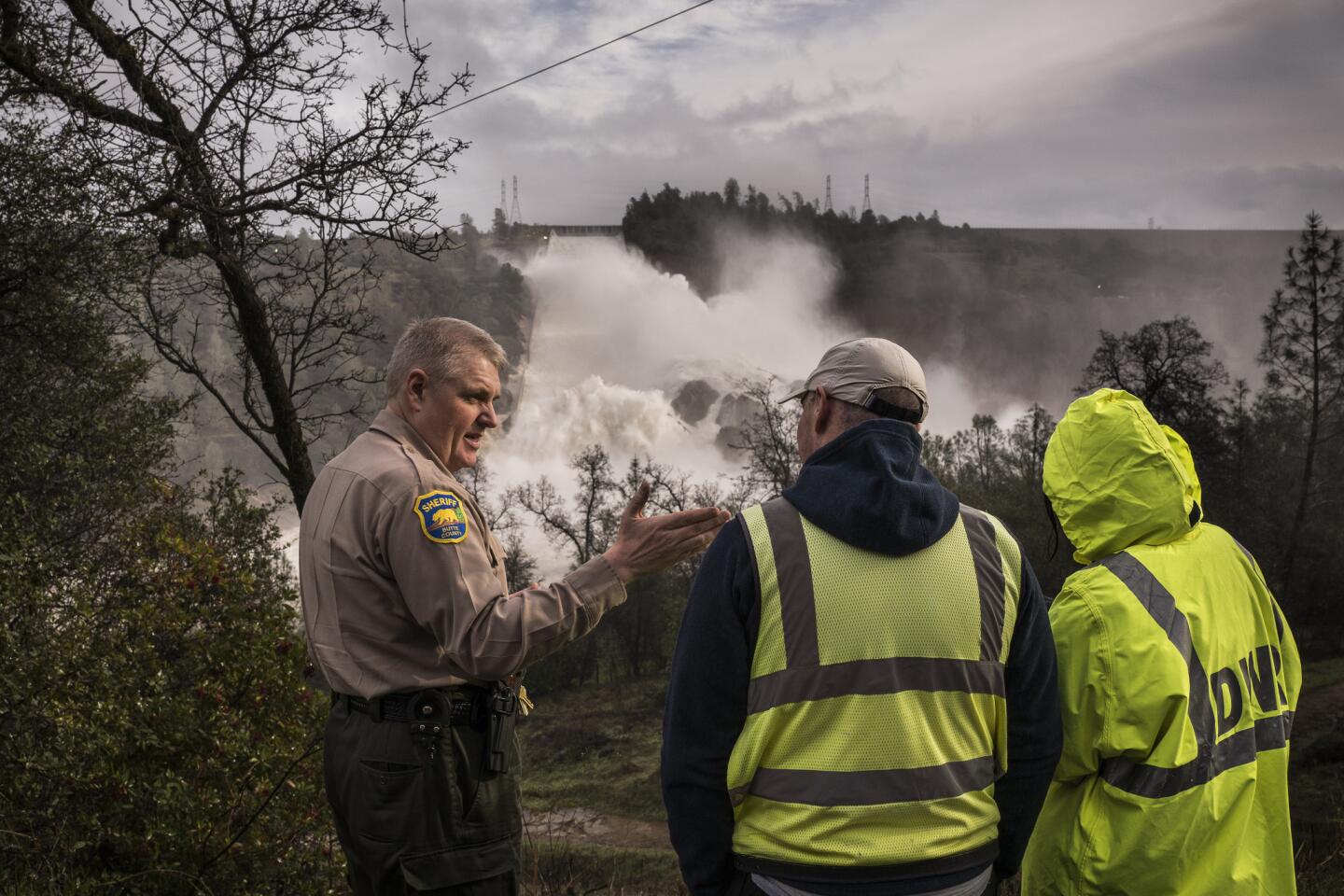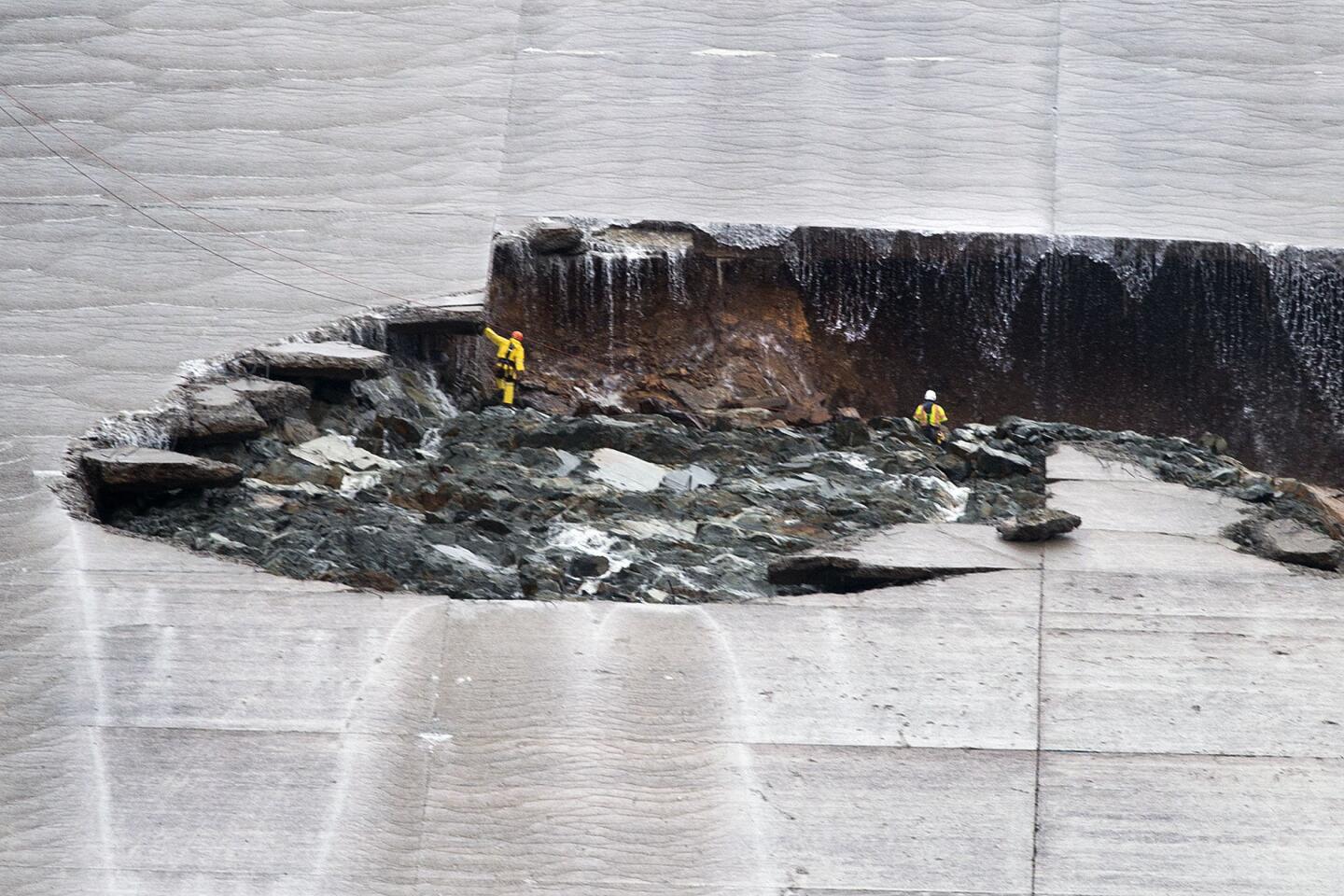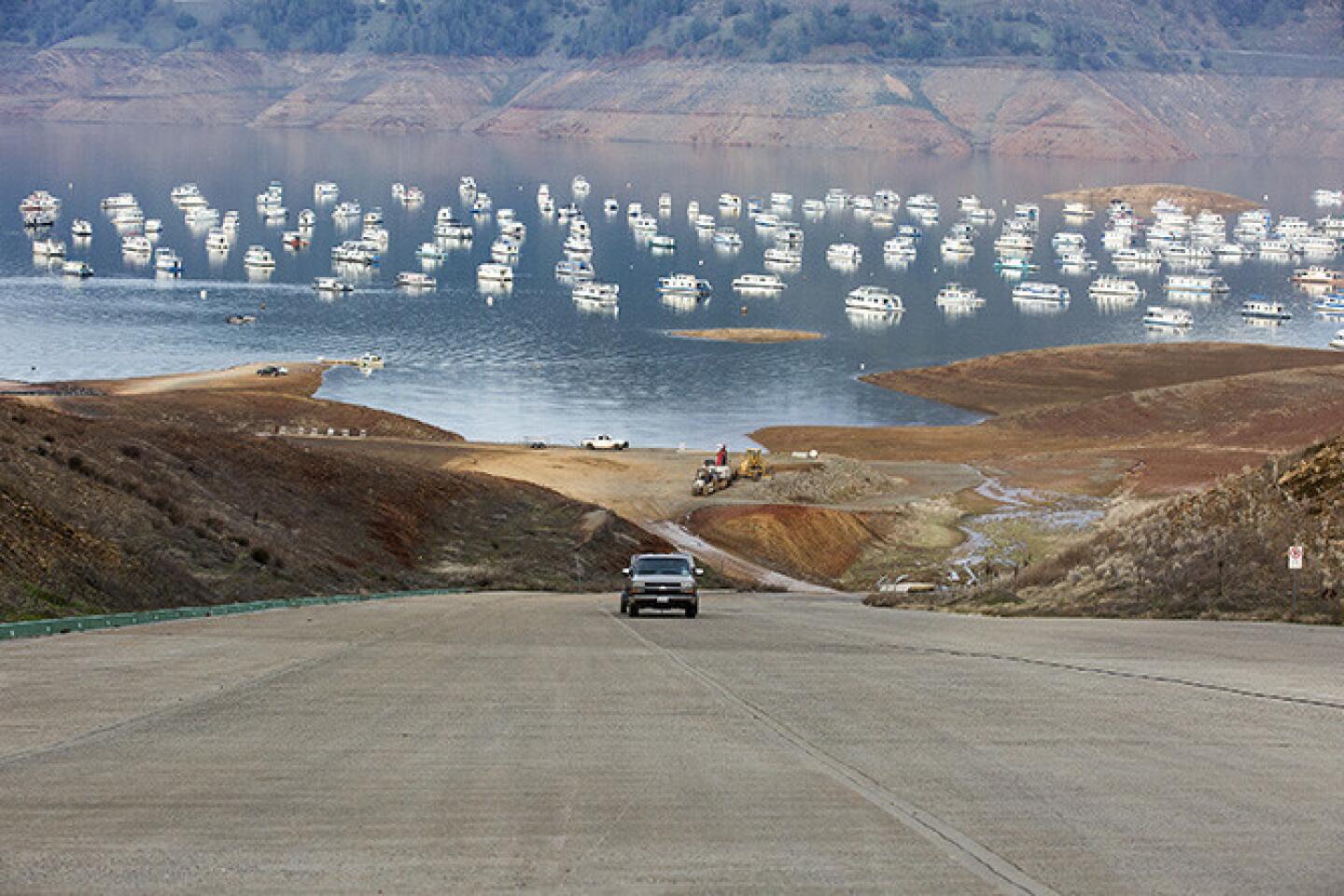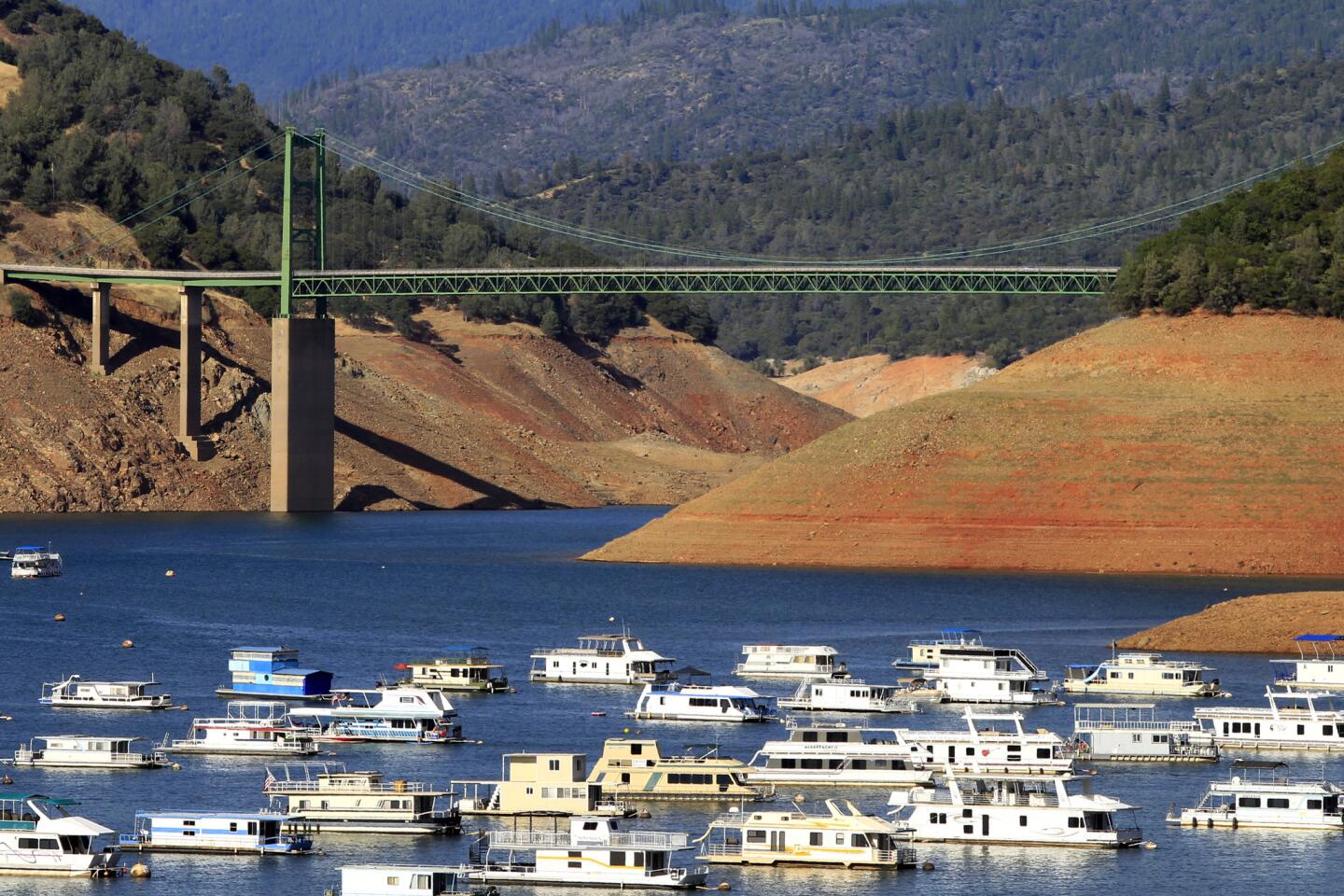Damage to Oroville Dam’s spillway worsens as officials consider emergency measures
As millions of gallons of rushing water continued to pound and erode the massive Lake Oroville Dam spillway on Friday, dozens of onlookers gathered on a nearby hillside to catch a glimpse of the muddy spectacle.
“I’ve never seen it like this, ever,” said Charles Wing, an Oroville bricklayer. “And I’ve been here 44 years,” he said.
Elberta Portman, 63, drove up from the Sacramento area with her husband, Dennis, 66, just to take a look. They weren’t disappointed: A mighty wave of water tumbled down the concrete chute at up to 50 miles per hour and exploded into the air as it hit the fracture that has opened up in the spillway in the last few days. From there, the water carved into the sloping earth beside and beneath the spillway, turning it the color of heavily creamed coffee, and washing mud, rock and concrete into the Feather River below.
“It’s pretty impressive,” Elberta Portman said.
Although rains had tapered off Friday, runoff from surrounding foothills continued to dump water into the fast rising lake. To make room, Department of Water Resources officials plan to keep the spillway open throughout the day. The constant flow was sure to damage the concrete slide even further, but posed no risk to the dam itself, they said.
Though the lake’s level continues to rise, it’s at a pace that engineers are comfortable with. They said the lake level will begin to lower by Saturday afternoon when the latest storm runoff subsides.
Currently, water is gushing down the spillway at 65,000 cubic feet per second, while inflow to the reservoir is roughly double that at 130,000 cfs, according to DWR Senior Engineer Kevin Dossey.
The spillway follows the slope of a dirt- and tree-covered hill that helps secure the towering dam. As long as the water doesn’t erode the upper portion of the hillside, engineers will continue to use the spillway, they said.
As a precaution, Calfire crews have worked to clear portions of a nearby emergency spillway. So far they’ve removed one-third of the trees from the emergency spillway in case it’s needed, but they don’t expect it will be, according to the DWR.
Engineers’ biggest concern is the debris going into the Feather River. The water is already murkier than normal because of the damaged concrete spillway, and if the emergency spillway was used, even more sediment, brush and debris would end up in the river, officials said.
The spillway fracture began as a 200-foot-wide hole that was discovered earlier this week. By Friday, the break appeared to run across the full width of the spillway near its bottom half.
At a Friday press conference, reporters asked DWR officials why the spillway hadn’t been repaired better after problems were found a few years ago.
“Something has happened we didn’t expect to happen,” said Kevin Dossey, DWR engineer. “There wasn’t evidence that more needed to be done.”
The Department is setting up a barrier and boats downriver from the spillway to catch any debris that might come down, officials said.
Images of water crashing down the spillway began circulating widely on social media on Thursday.
“These pictures are dramatic and they will continue to change and be dramatic,” William Croyle, the DWR’s acting director, said at a Thursday evening news briefing.
“As we upped the flows … that’s further eroding around the lower part of the spillway and the spillway itself. That’s not a surprise to us,” he added.
The spillway is separate from the dam, Croyle emphasized, adding that “none of this is affecting the integrity of the dam itself.”

Millions of gallons of rushing water continued to pound and erode the massive Lake Oroville Dam spillway.
On Friday morning, operators said that if current releases from the nearly full reservoir can be maintained, it is less likely the lake will rise to the point where water flows into the emergency spillway channel.
Bobbie Sage, 40, of Oroville marveled at the height of the lake, which had suffered under the drought. She recalled going swimming there with her children in the dry years.
“You’d have to park and run way down the boat ramp to get to the docks,” she said.
Northern California, including the Sacramento Valley, has been pounded by a parade of storms since the beginning of the year, piling snow in the Sierra Nevada and soaking the surrounding mountains and foothills.
Read more: The frantic fight to protect the nation’s tallest dam as spillway rapidly erodes »
The last of the week’s storms is expected to drop up to 2 inches of rain between Friday and Saturday before it’s replaced by warmer temperatures early next week.
“Even though rainfall will taper off after today, runoff will continue and many rivers and streams will remain high with continued fast stream flows, the National Weather Service’s Sacramento office said in a flood statement Friday.
The reservoir level had risen to 895 feet by Friday morning, just six feet below the emergency release point of 901 feet. Officials spent Friday preparing for the possibility of flows pouring down the unpaved emergency spillway sometime early Saturday morning.
“It will be pretty amazing to see what happens,” Croyle said. “It will be a thin veneer of water flowing over the crest into ravines and into the river.”
In preparation for that, crews cleared trees and brush from the emergency pathway on Thursday. The state also moved a couple of million fish out of the downstream Feather River Hatchery because water from the eroded spillway is too muddy for hatchery use.
Officials do not know what caused the collapse of a section of the spillway, gouging a hole that was 45 feet deep and 250 feet long. The cavity has since doubled in size.
Water continues to rush down the spillway and the lake’s inflow had dipped since Thursday. Officials insisted that there was no danger to the public on Friday.
The Butte County Sheriff’s Office said there was no imminent threat from the spillway but nevertheless urged residents nearby to prepare for possible evacuations if that changes. The Butte Office of Education canceled classes in Oroville on Friday due to the weather and as a precaution due to the spillway, officials said.
The state’s second largest reservoir, Oroville provides the main storage for the State Water Project that sends Northern California supplies to the Southland.
For some area residents, the spillway episode called to mind 1997, when heavy rains and flooding prompted evacuations.
Mike Ramsey, who has served as Butte County District Attorney for the last 29 years, said residents were afraid then that the water would come over the emergency spillway and swamp downtown Oroville with ten feet of water.
“People were told to pack up their stuff and get out,” Ramsey recalled.
Nothing happened though. The water stopped just a few inches before going over, he said.
“That’s what’s been on people’s minds,” Ramsey said Friday. “Are we going to have to evacuate again? Are we going to have to start pulling stuff out?”
However, it seems like the threat isn’t as bad, and there’s no evacuation order. He was just talking with the local rotary club, which is planning a dinner for tomorrow night. The dinner was scheduled for the municipal auditorium right on the levee, and they’re not cancelling it, a sign of confidence that things will be ok.
Twitter: @boxall
Staff writer Joseph Serna contributed to this report.
ALSO
Music producer Ramsay Tha Great charged with pimping and pandering
Sister-in-law of San Bernardino terror attack shooter pleads guilty in marriage fraud case
Immigration arrests in L.A. spark fear, outrage, but officials say they are routine
UPDATES:
2:55 p.m.: This article was updated with comments from Ramsey.
1:30 p.m.: This article was updated with reactions from Oroville residents and other spectators.
10:50 a.m.: This article was updated with details from the National Weather Service and the California Department of Water Resources.
Feb. 10, 7:45 a.m.: This article was updated throughout with additional details and developments.
This article was originally published on Feb. 9 at 8:04 p.m..
More to Read
Start your day right
Sign up for Essential California for news, features and recommendations from the L.A. Times and beyond in your inbox six days a week.
You may occasionally receive promotional content from the Los Angeles Times.
